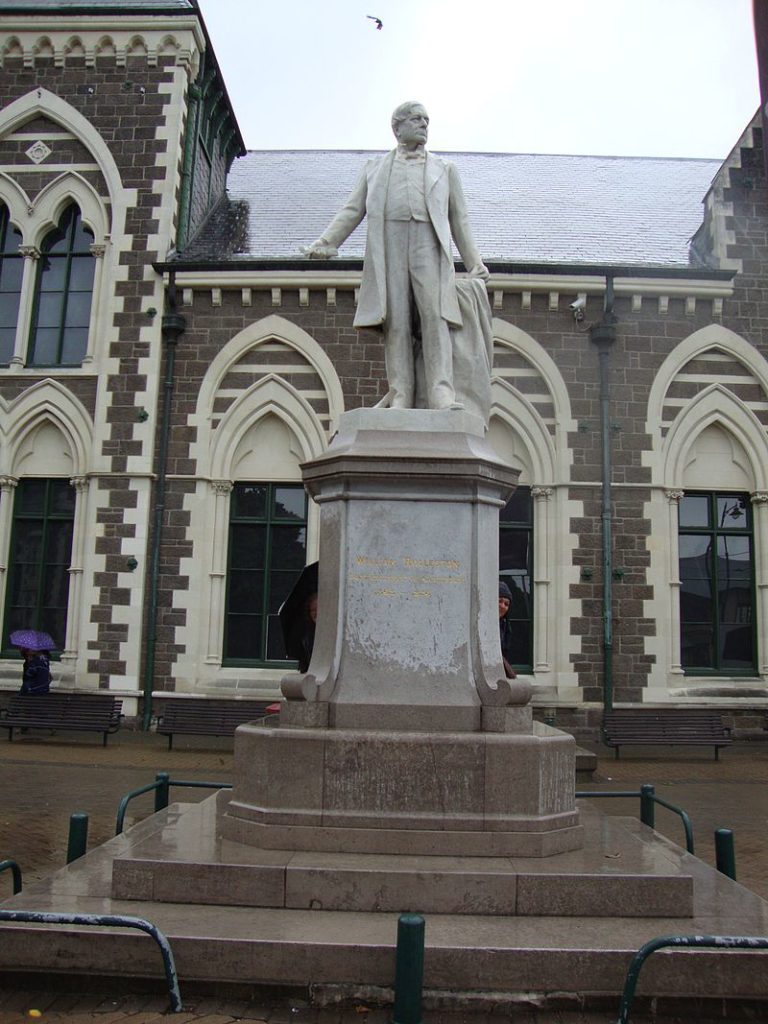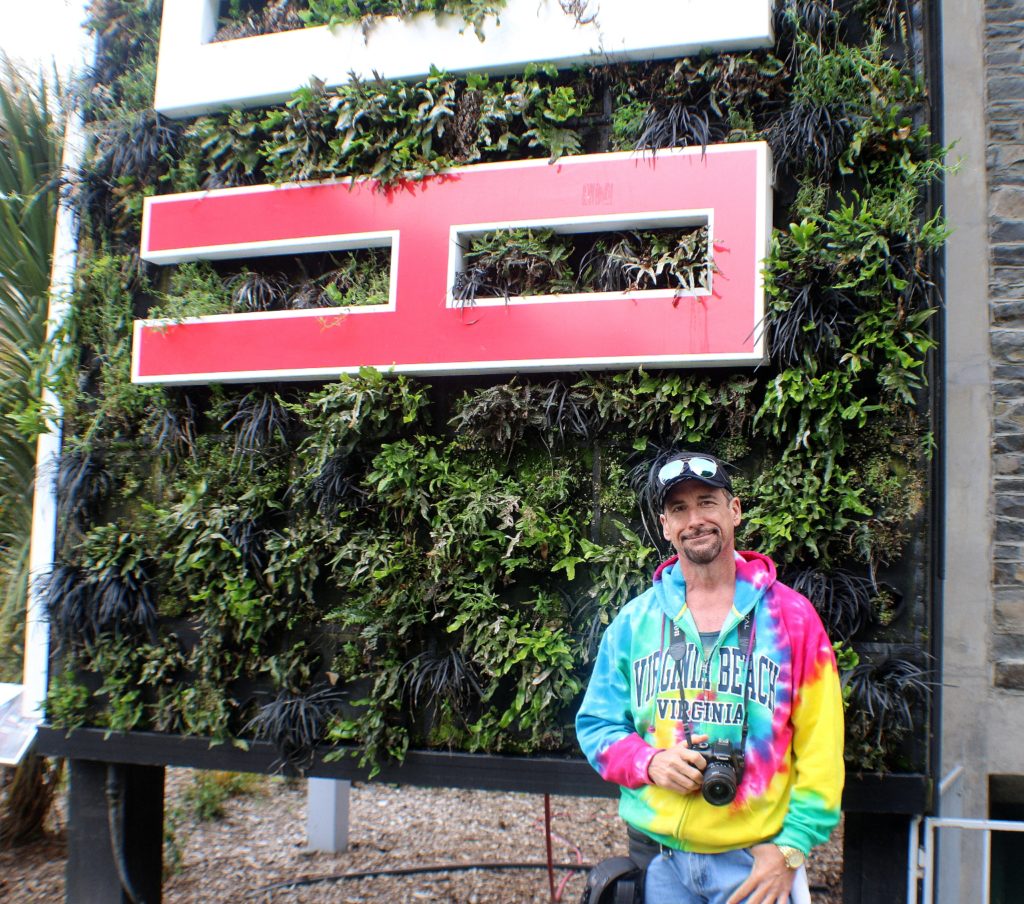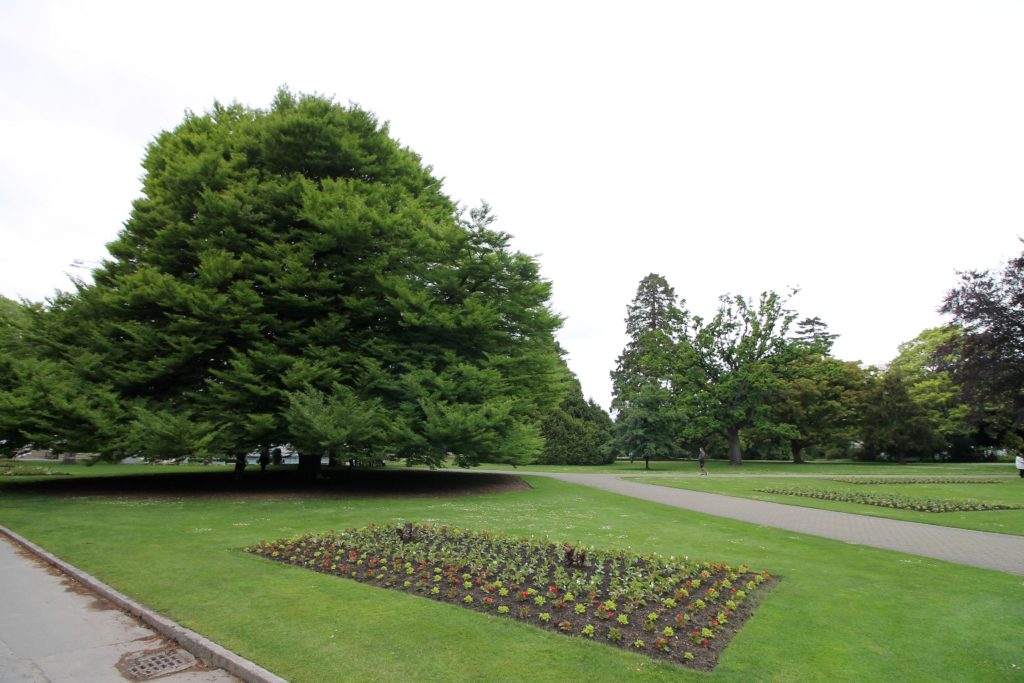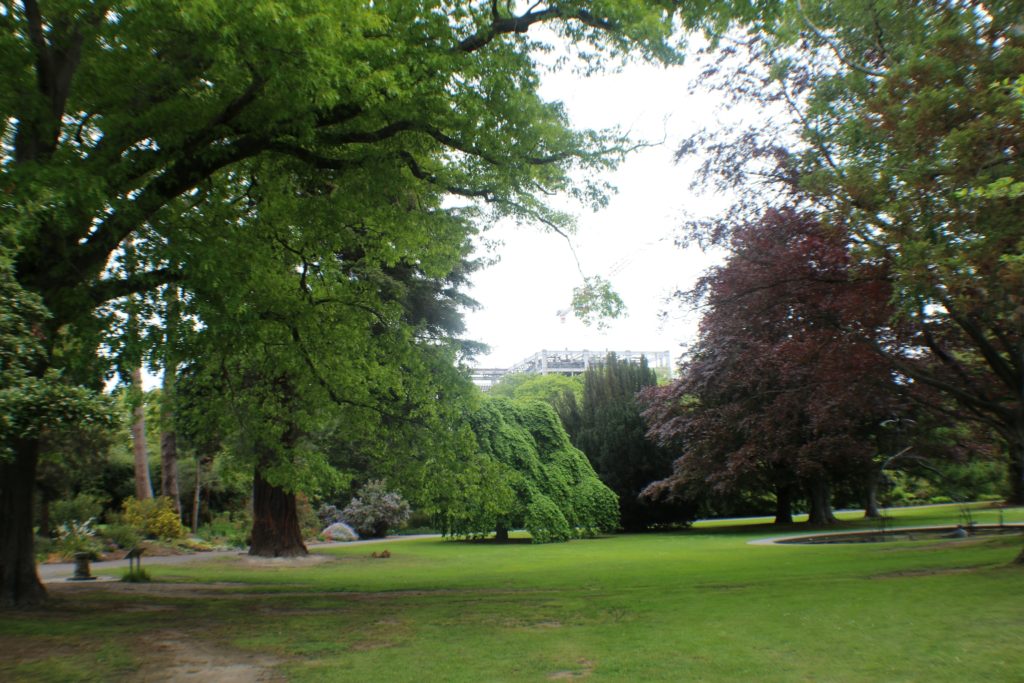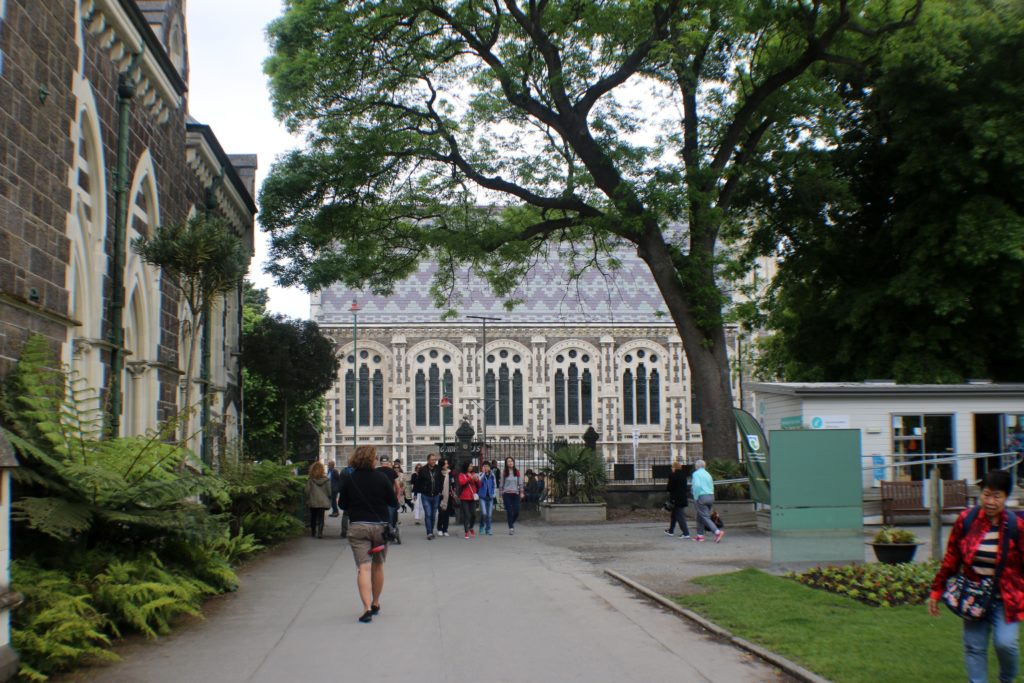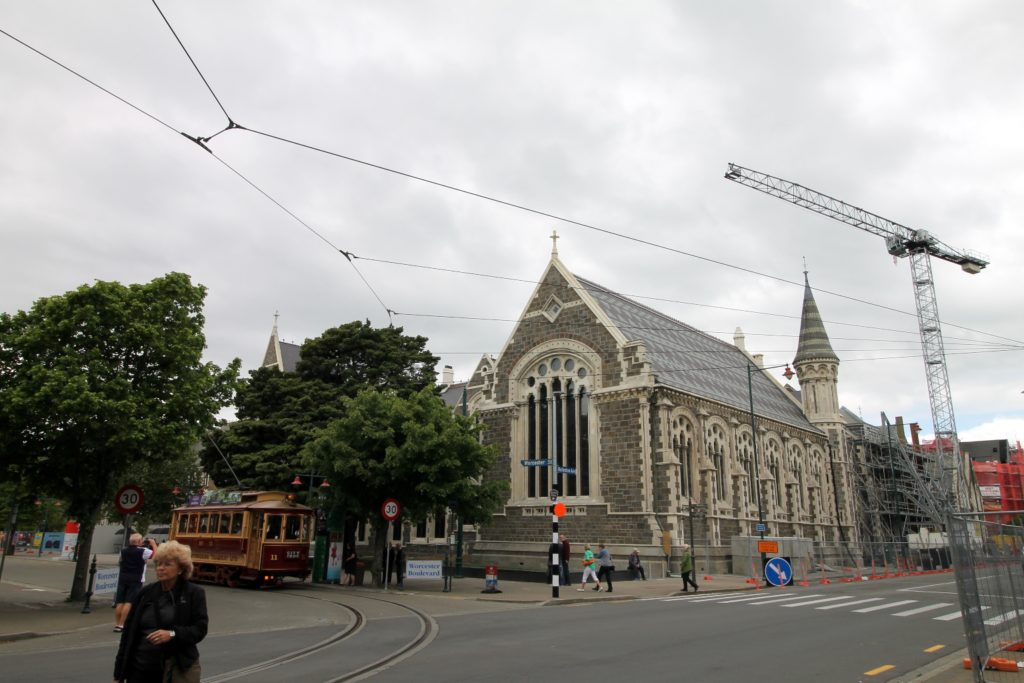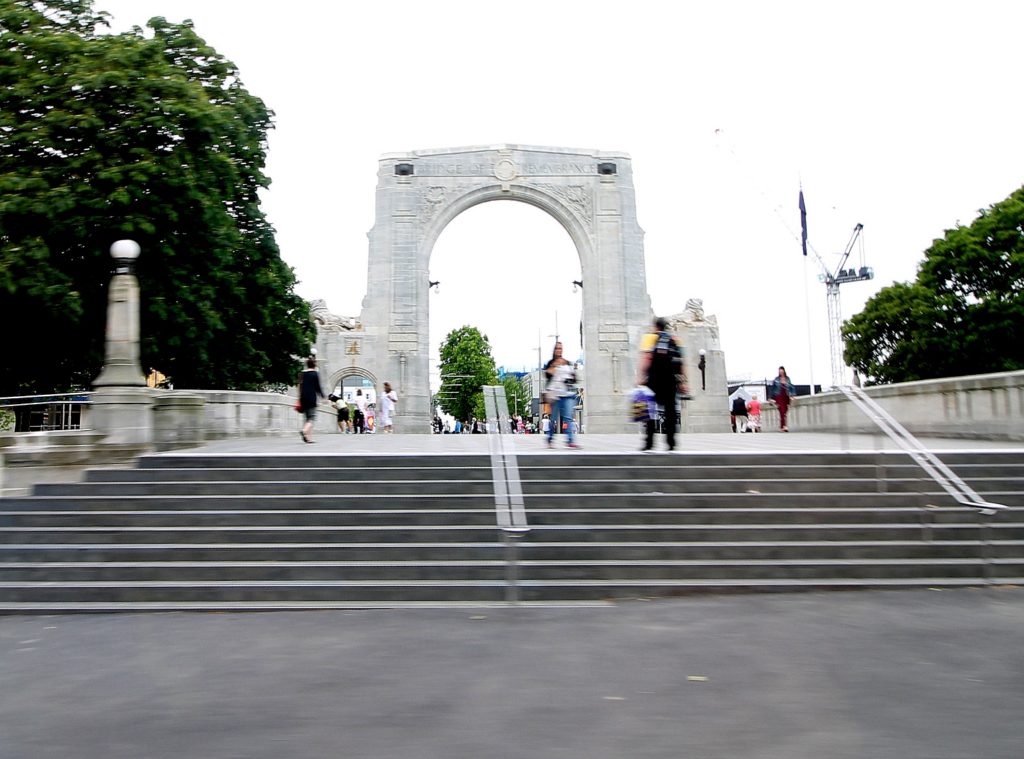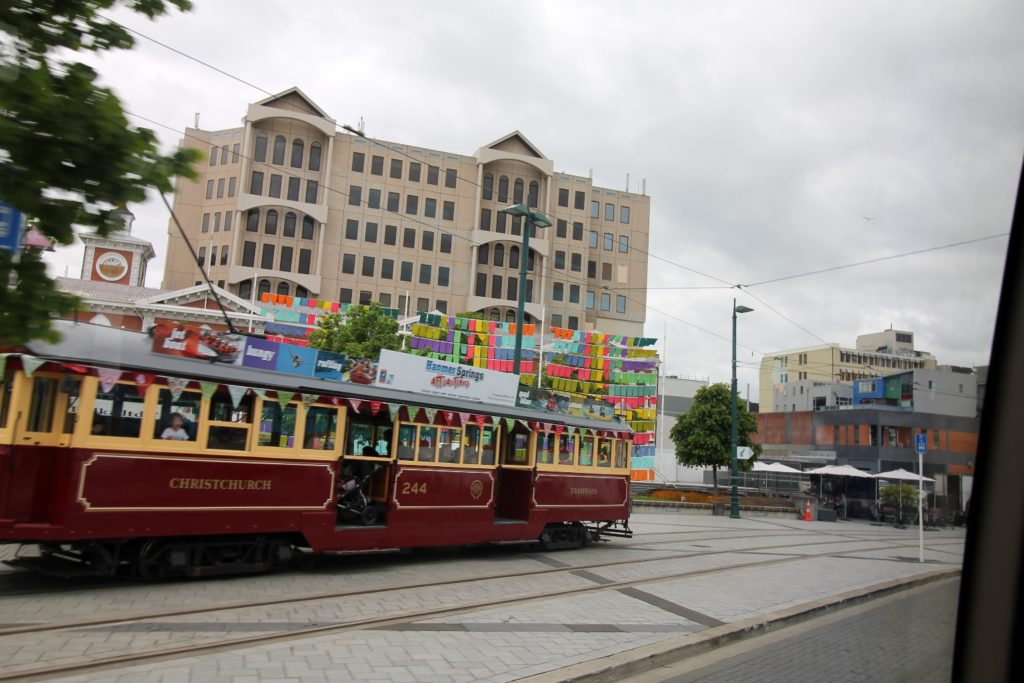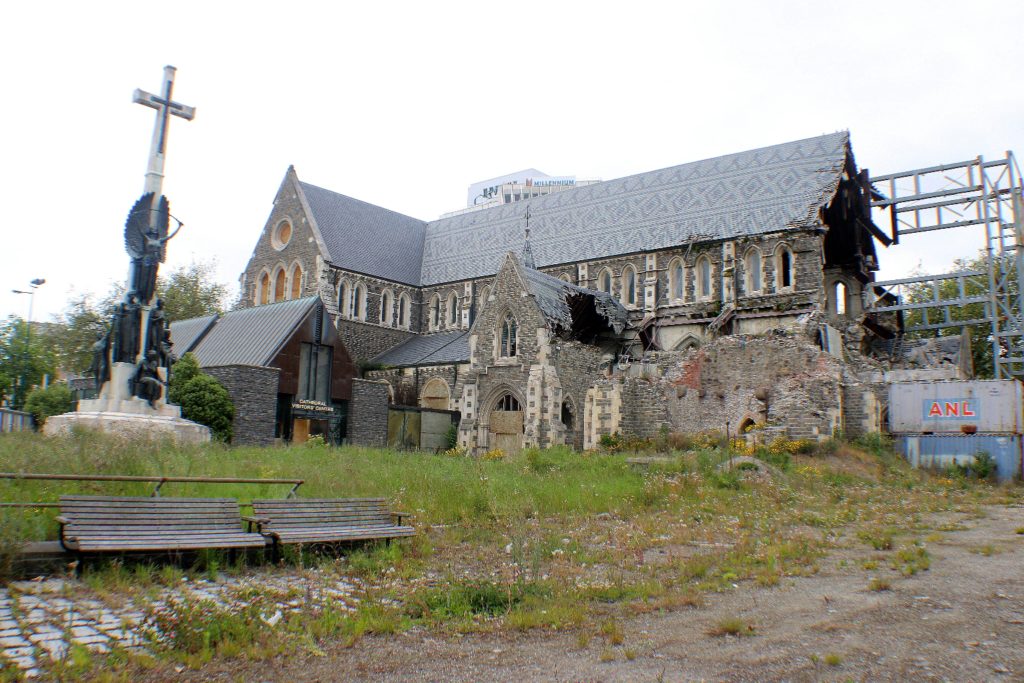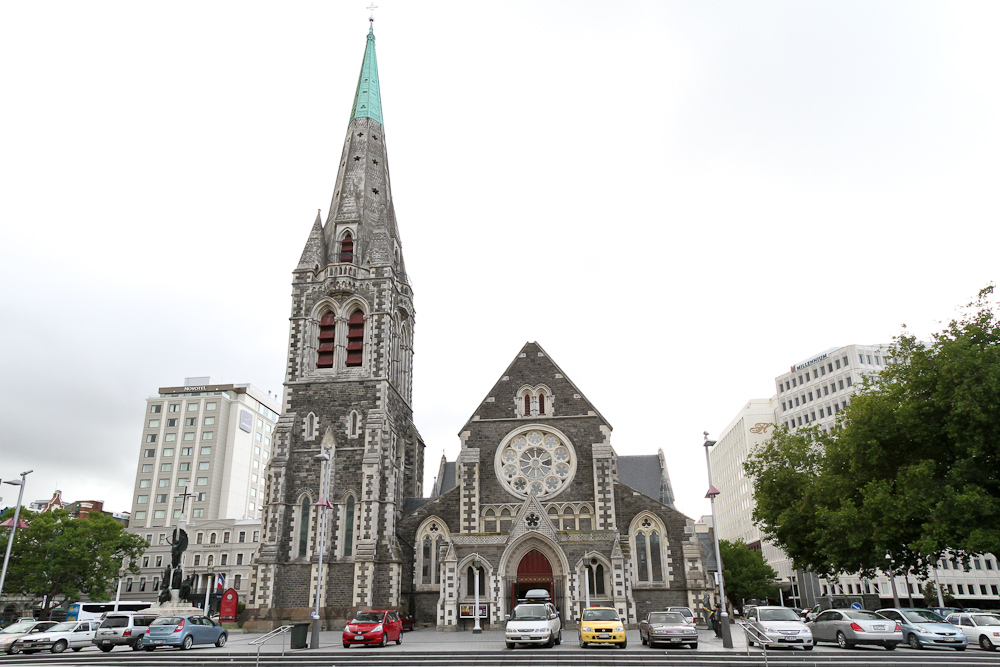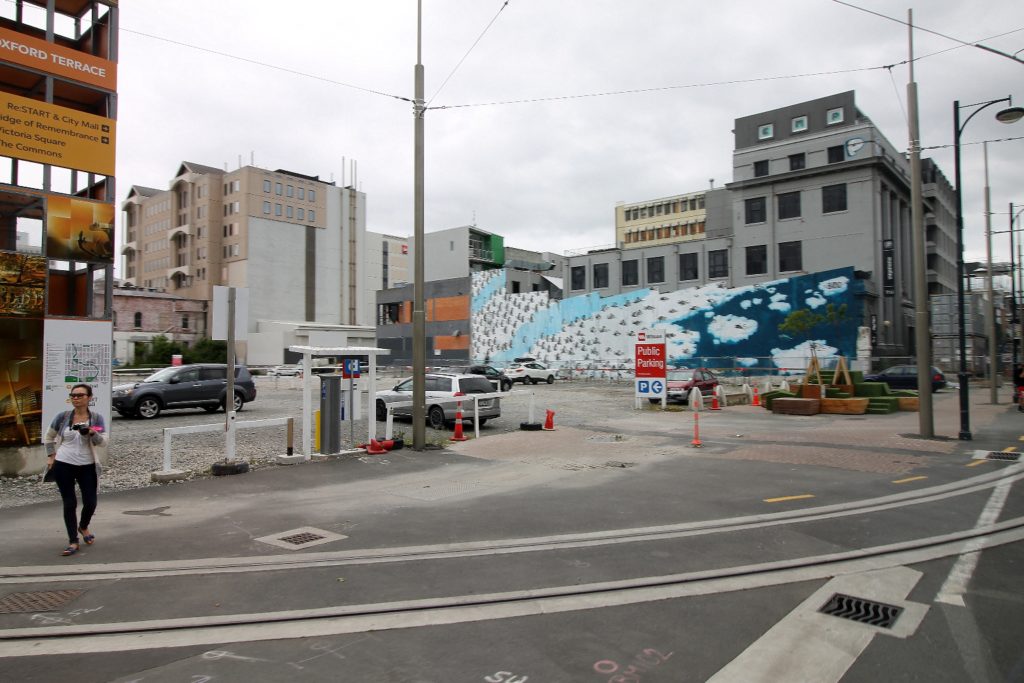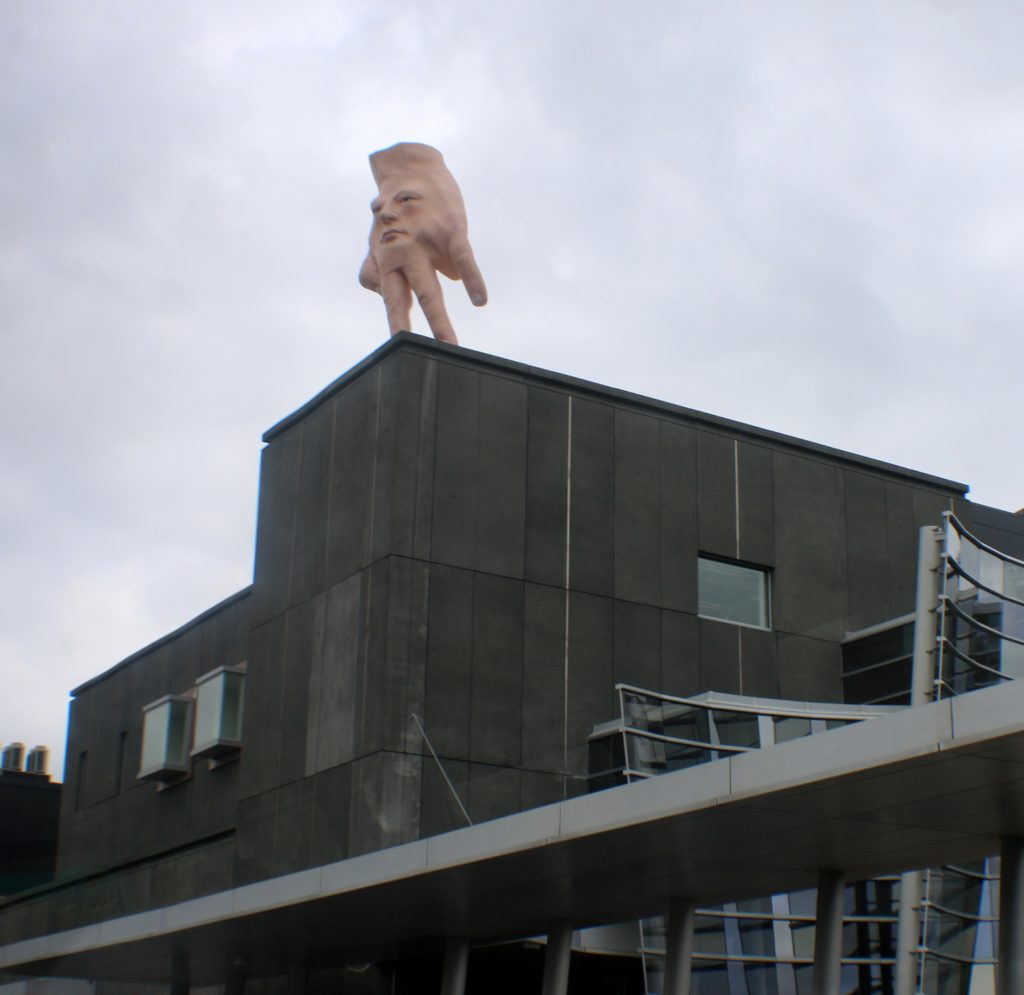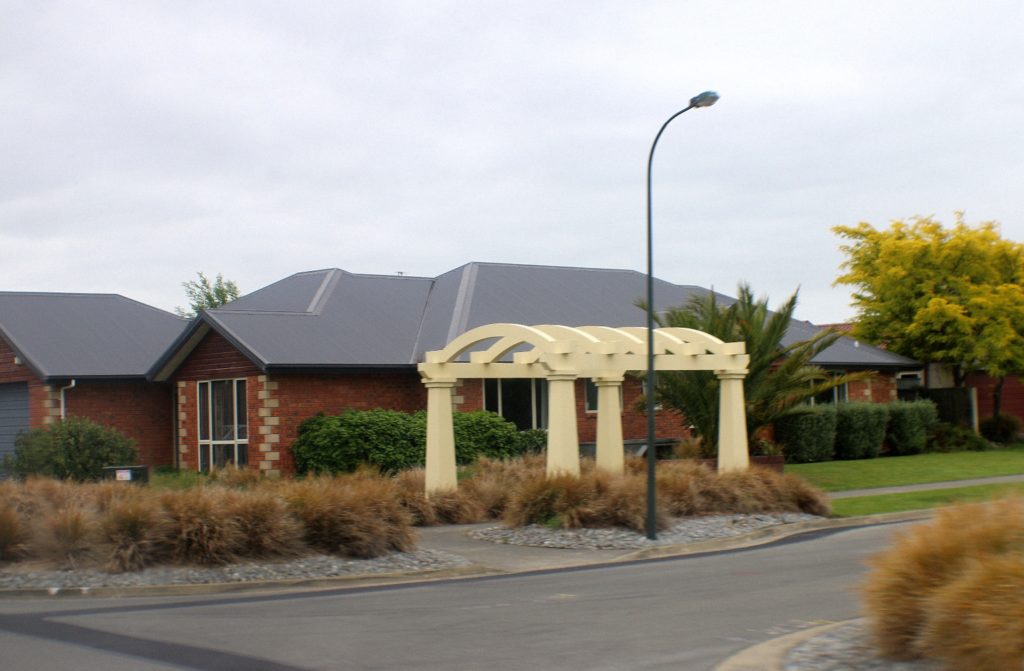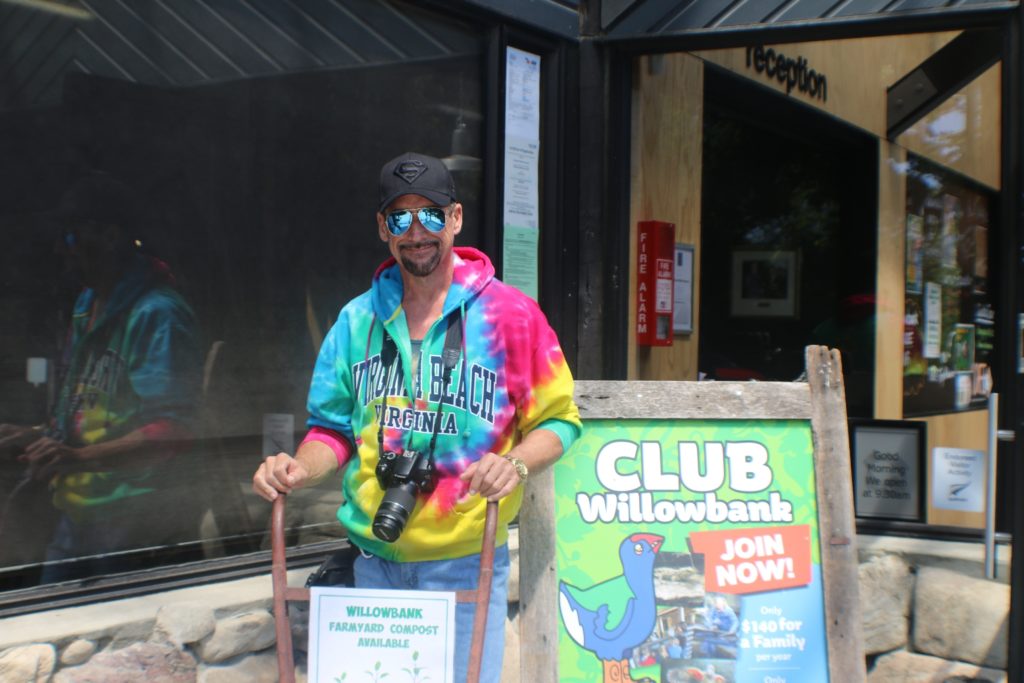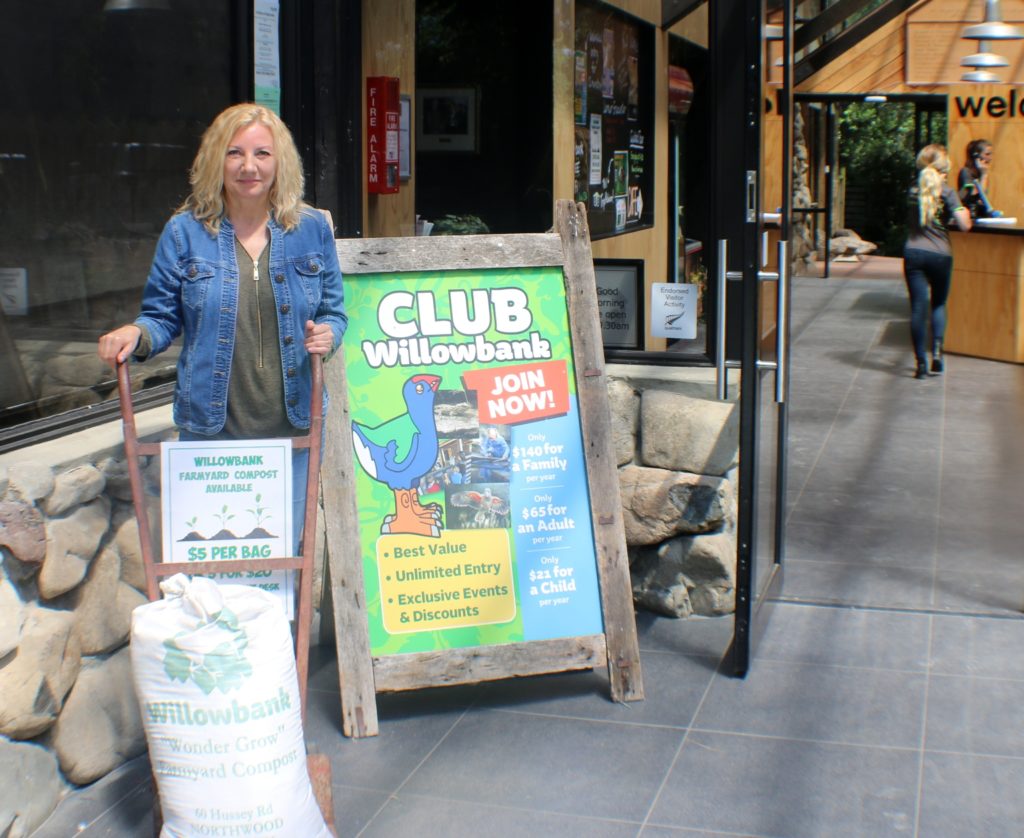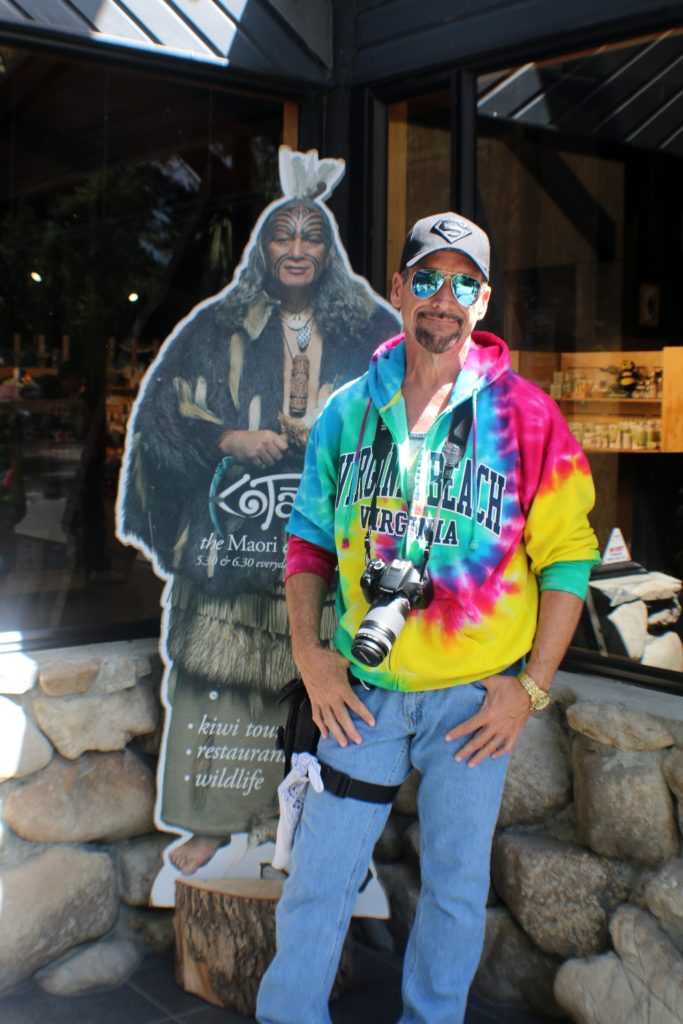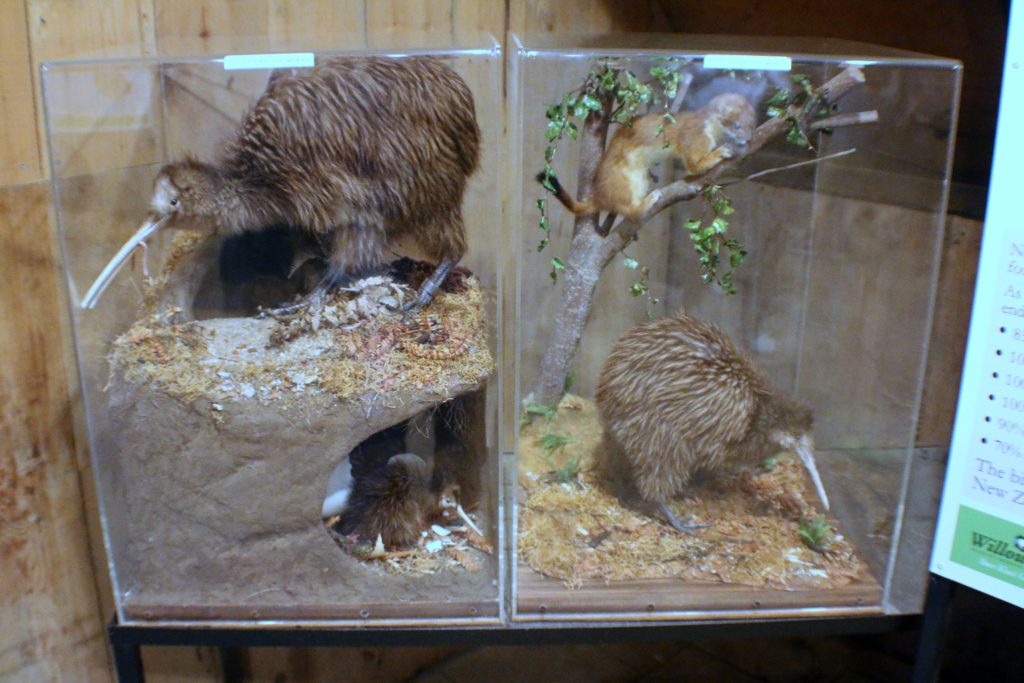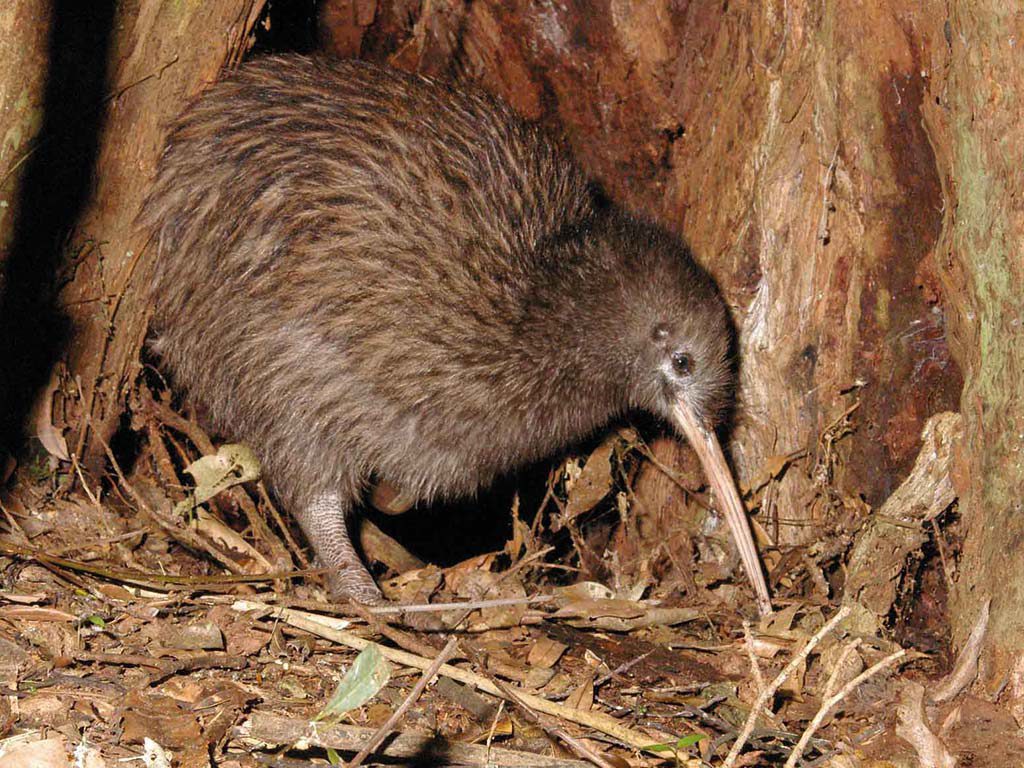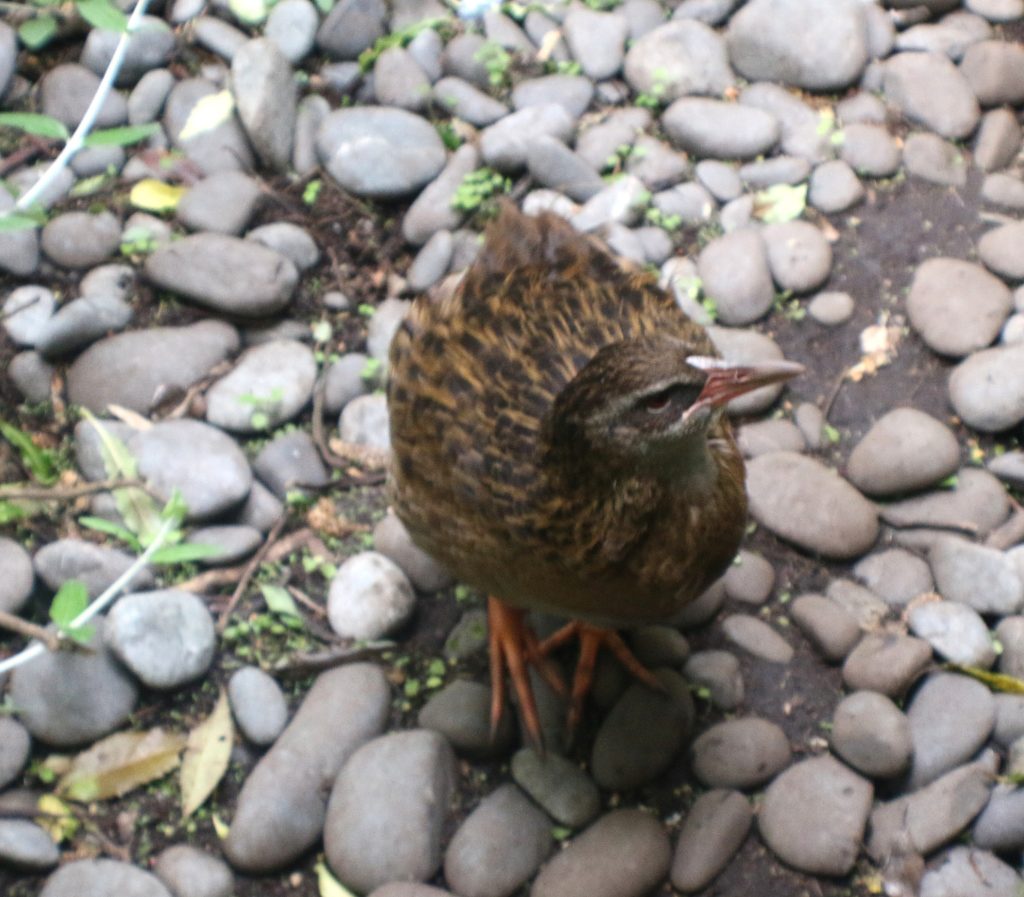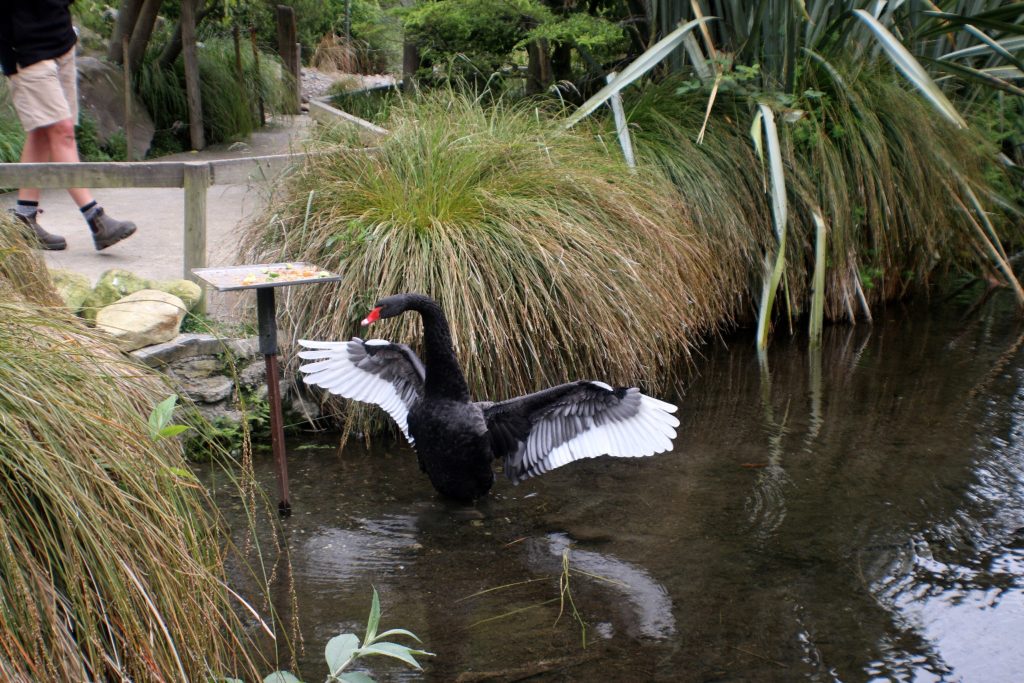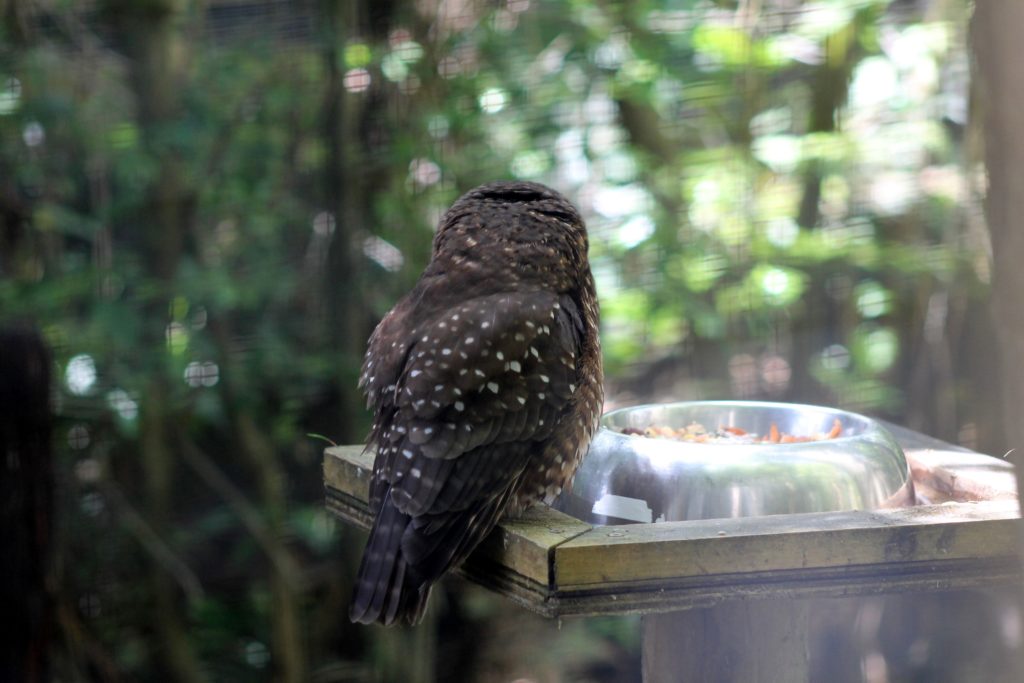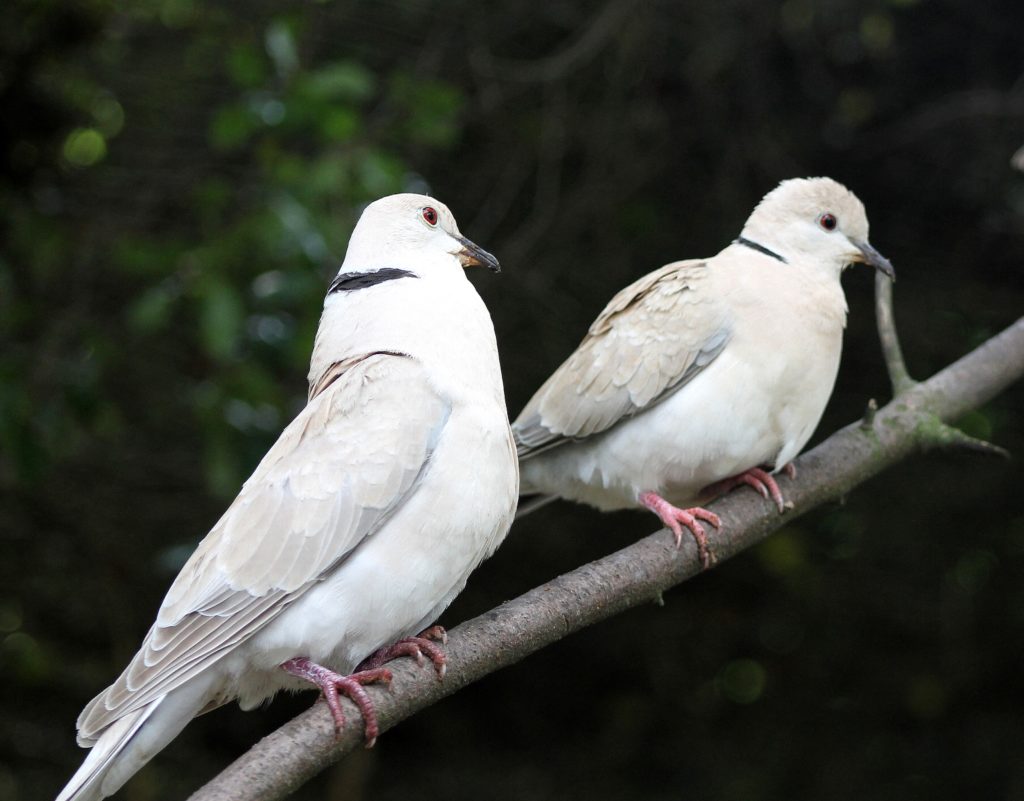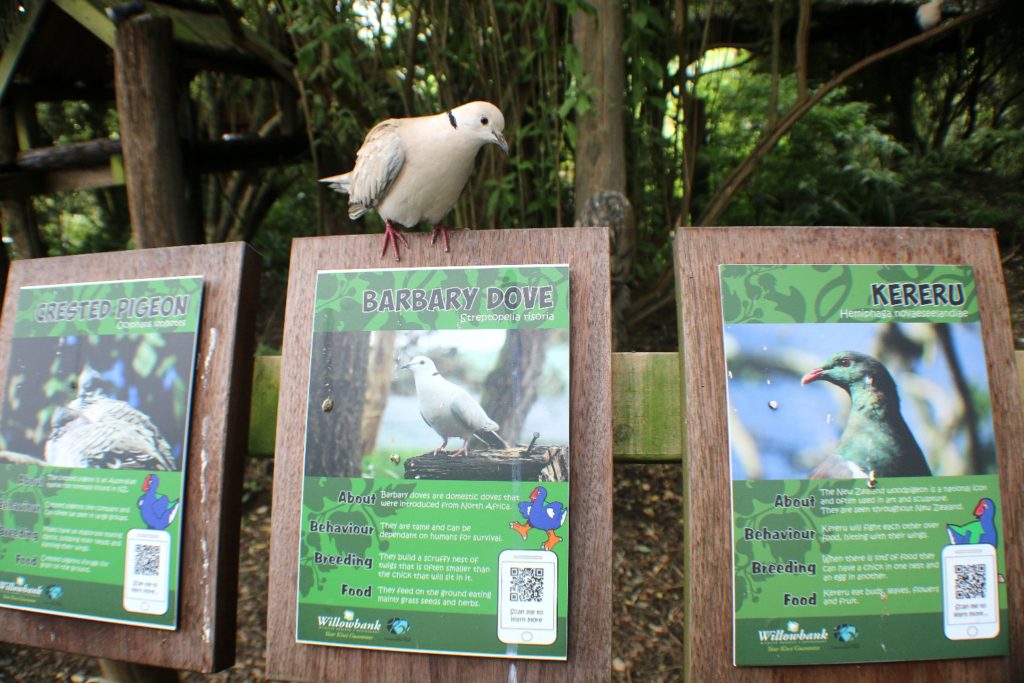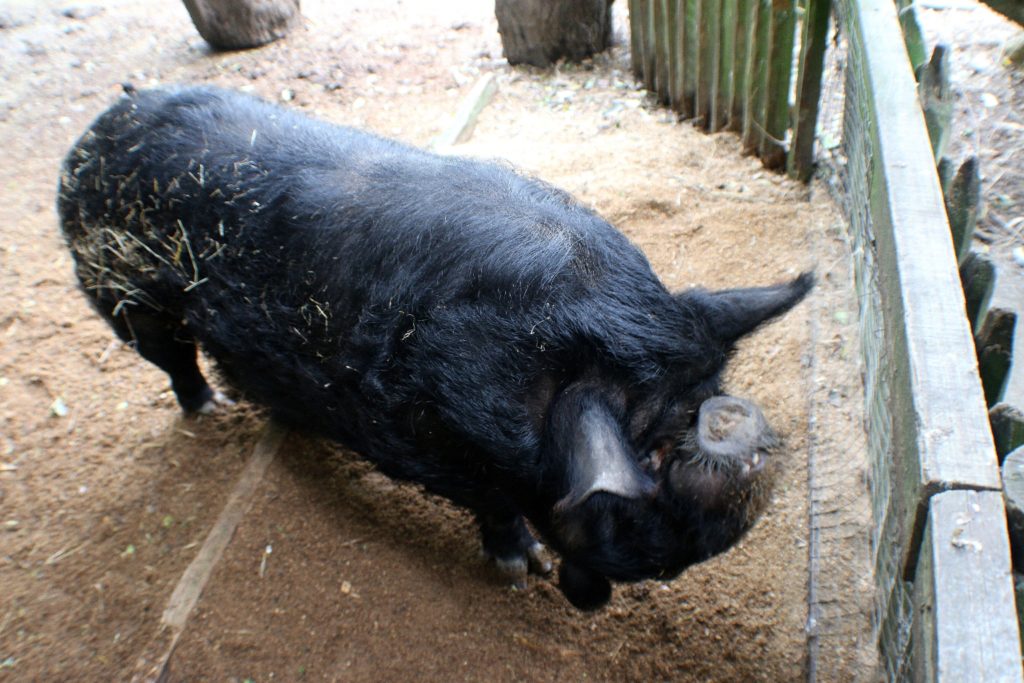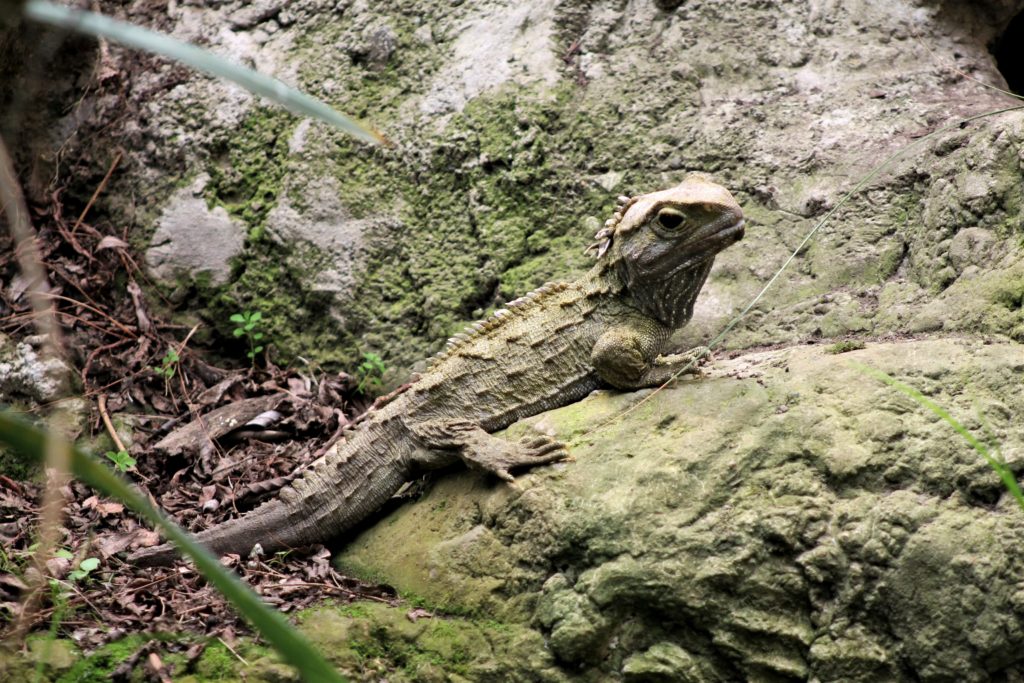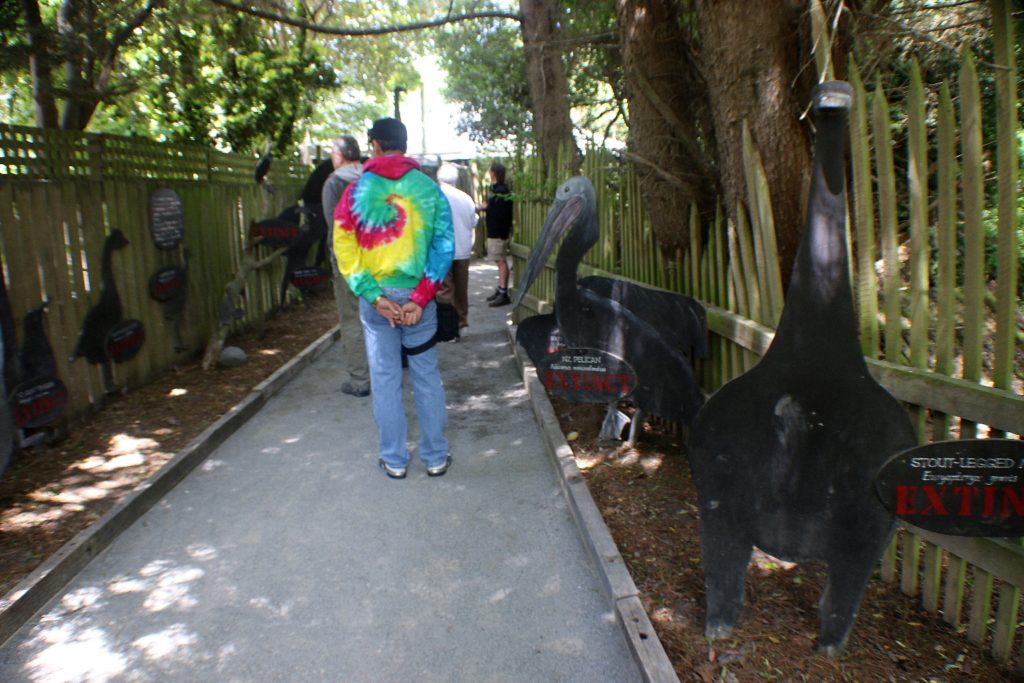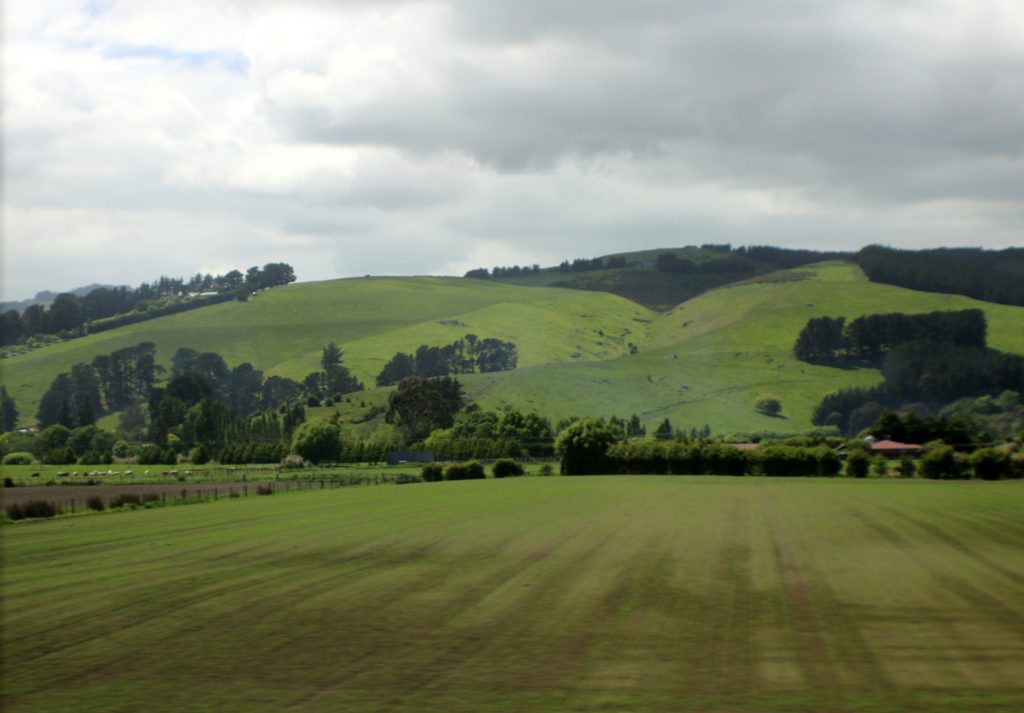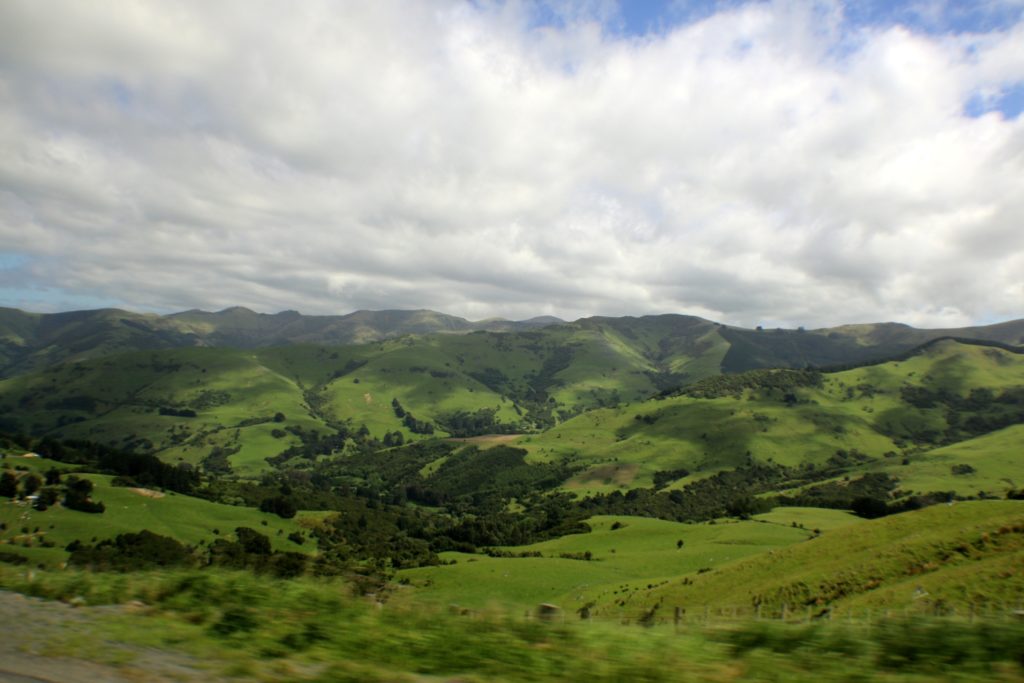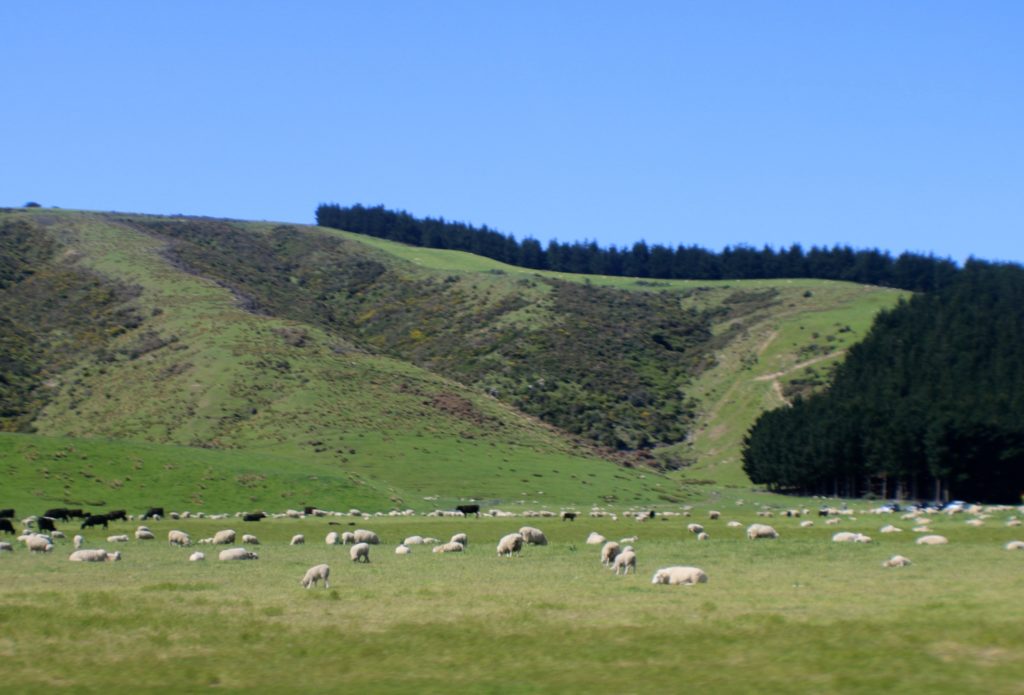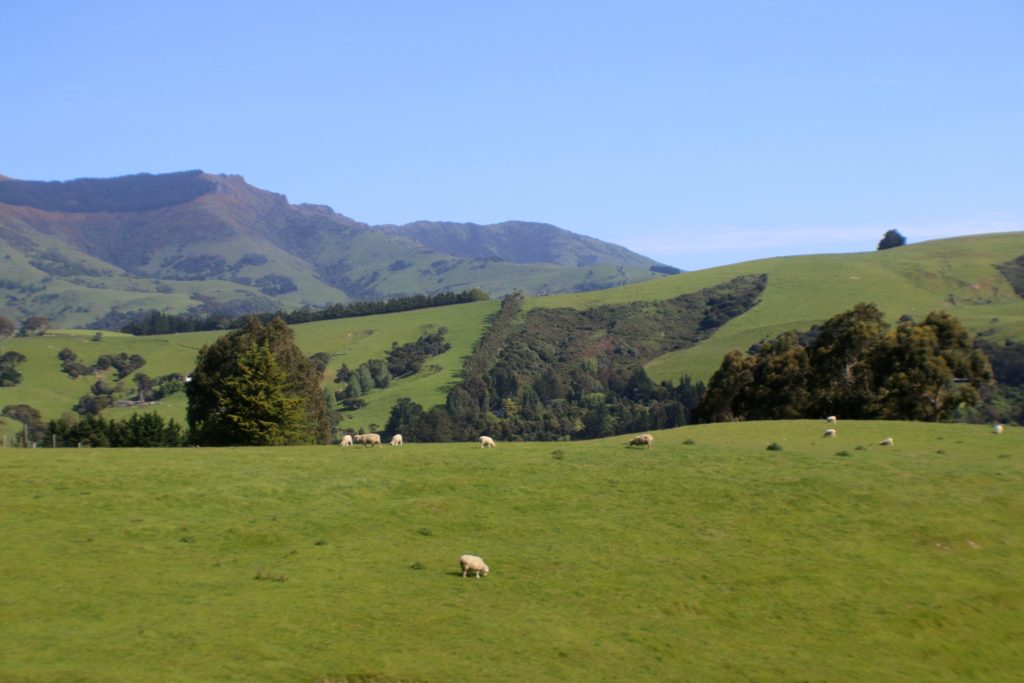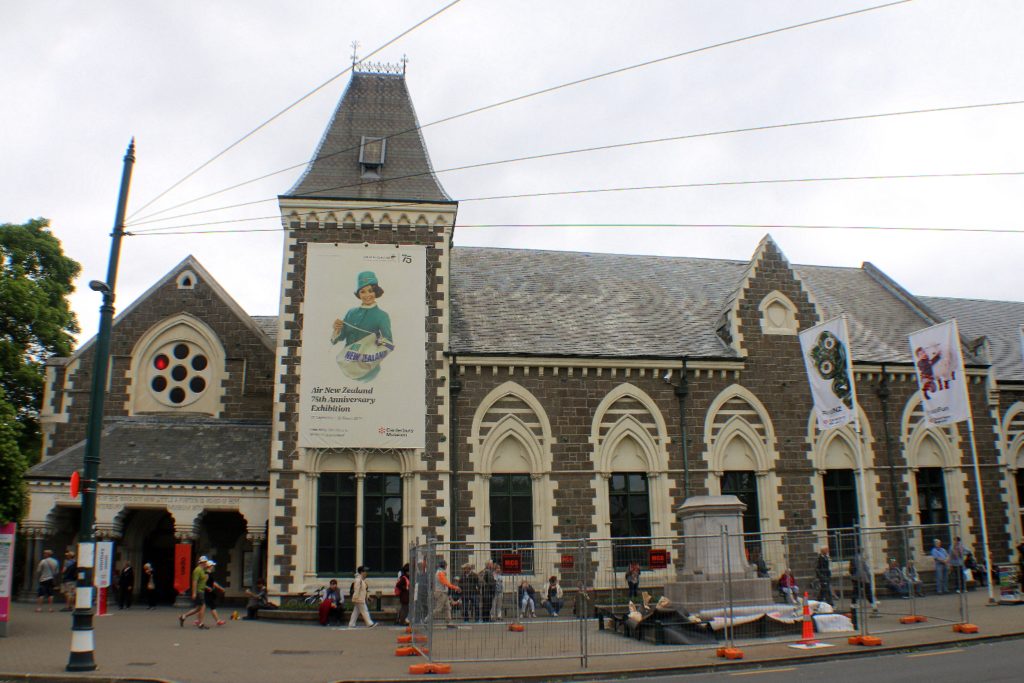
Our tour bus from Akaroa brought us to the Christchurch Canterbury Museum, where we were supposed to relocate to the minivan for the Christchurch sightseeing tour. The Museum is world-renowned for its natural and human history collections.
The fenced part in front of the museum is what is left of the Rolleston Statue, which fell off its plinth in the 2011 Christchurch earthquake but was repaired in 2016. The statue commemorates William Rolleston, who was Superintendent of the Canterbury Province from 1868 until 1877. Below is a picture of the Rolleston Statue outside the Canterbury Museum in November 2010.
We had about a half an hour to spare while waiting for the tour, so we went to take a glimpse of the Botanical gardens, which were absolutely beautiful. This is the five meter high Kaitiaki living art installation. Kaitiaki “The Keeper” was the centerpiece of the 2013 Festival of Flowers. It was the designers’ wish to provide a guardian to the community as a symbol of faith in post-earthquake Christchurch. “Atua”, the other word in the sculpture, is Maori for God. This relates to the text carved into the façade of the Canterbury Museum, “Lo these are parts of His ways, but how little a portion is heard of Him.”
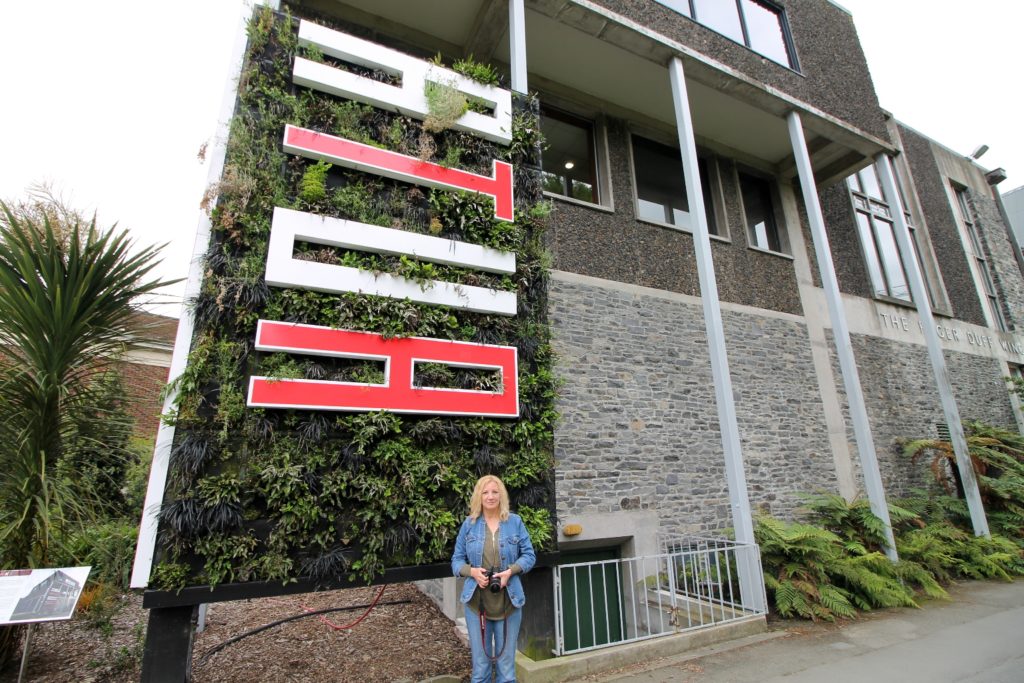
It is a visually striking art installation.
A few pictures of the gorgeous gardens trees and flowers.
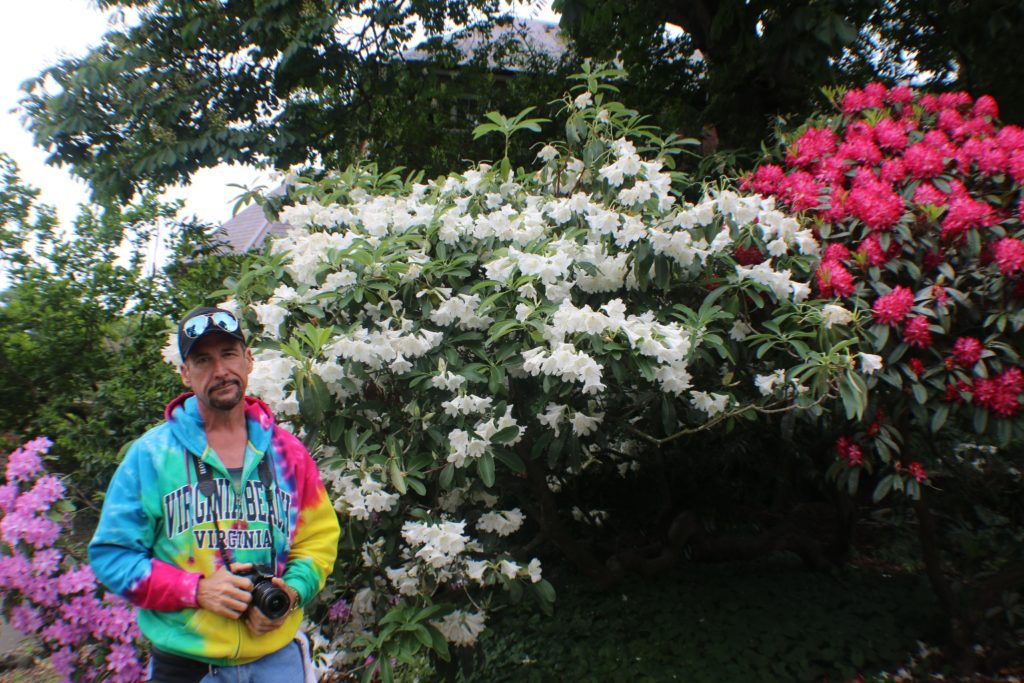
On the way back from the gardens to the museum for our city tour.
Another view of the Canterbury museum building.
On the bus for the guided tour of Christchurch, the largest city of the South Island.
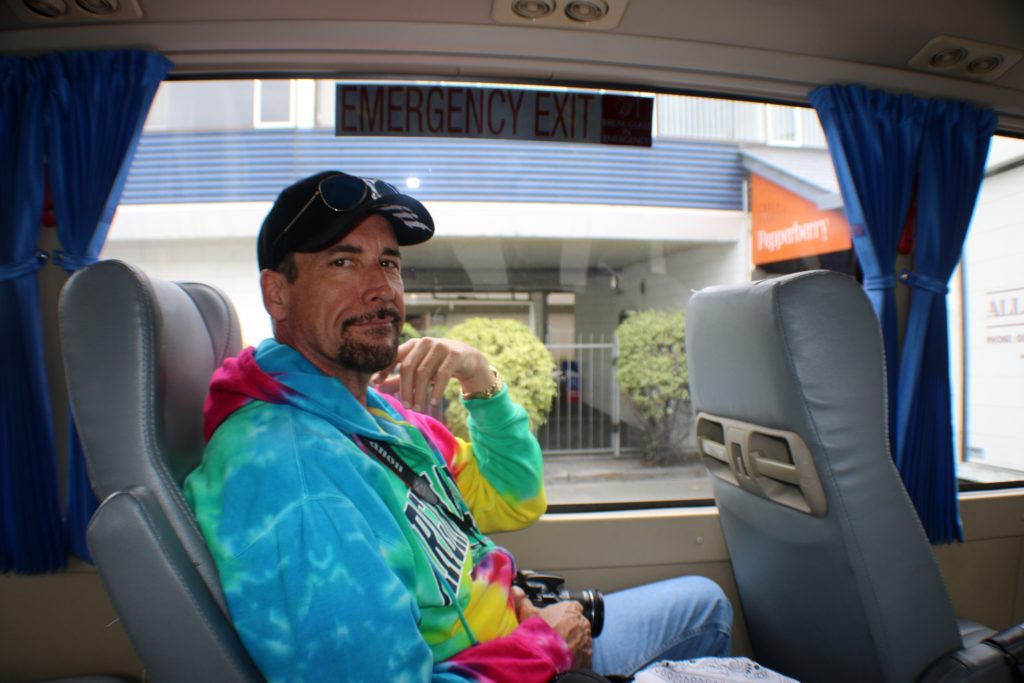
The Bridge of Remembrance is one of two main war memorials in Christchurch, New Zealand. It is dedicated to those who died in World War I, and serves as a memorial for those who participated in two World Wars as well as subsequent conflicts in Borneo, Korea, Malaya, and Vietnam. It is located on the Cashel Street Bridge at the head of City Mall. The Bridge of Remembrance was repaired and strengthened following the 2011 Christchurch earthquake and was reopened with a rededication ceremony held on Anzac Day in 2016 (from Wikipedia).
Driving through the city.
We stopped at Christchurch Cathedral, the very building that symbolizes Christchurch city. The cathedral was badly damaged in the earthquakes a few years ago. The cathedral is more than 150 years old. The Gothic Revival-style cathedral was once one of the city’s top tourist attractions.
Christchurch Cathedral before the earthquake (pic from SkyscraperCity).
A lot has happened in the few years since that first 7.1 earthquake wave. The resulting earthquake sequence that lasted with severe aftershocks right through to January 2012 has changed the landscape in Christchurch city forever. The worst of these shocks being February 22, 2011 where we must pay respect to the 185 lives that were lost on that day and the many tens of thousands of families who lost their homes, livelihoods and communities.
Much of Christchurch’s central business district was severely damaged by the earthquake. Hundreds of buildings have been demolished, including most high-rise office buildings and hotels.
The arts’ community has pulled together and painted a huge number of murals around the city; both on the walls of buildings still to be demolished as well on the walls of new structures. The murals were instigated in an effort to lift people’s spirits and to show that something good can be found if one has a heart to look past the damage.
This mural in Tuam Street by the corner of Manchester Street is by Jacob Yikes, and is called “From the ground up”. It certainly brightens up an overgrown area.
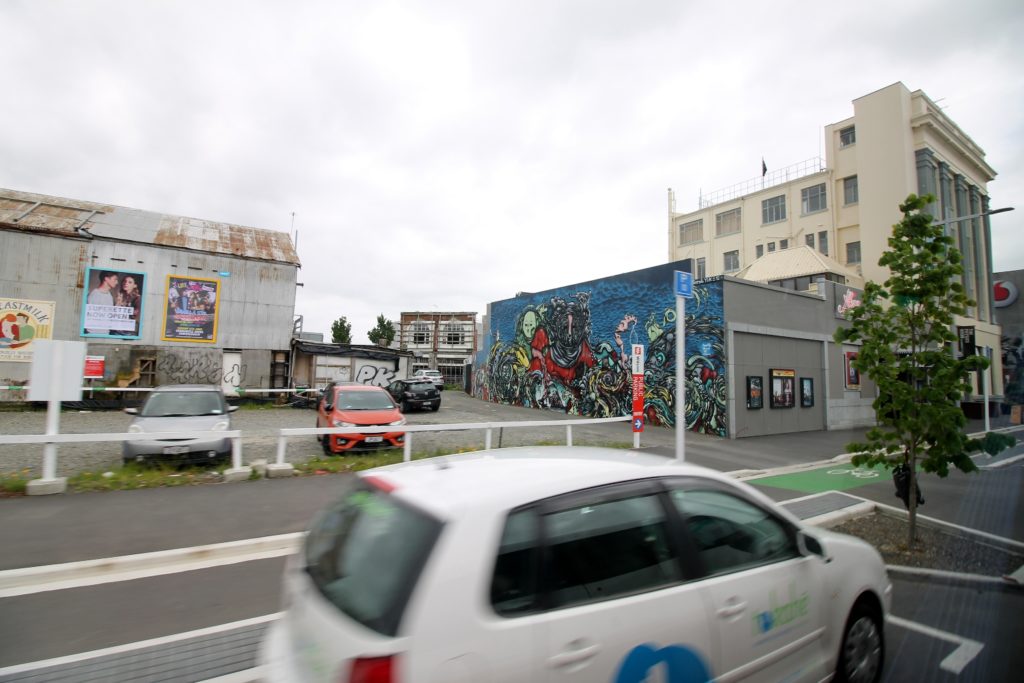
Penguin Mural – an artistic commentary on climate change.
We were informed that this new work of street art recently appeared on the UniMed building which is located on the corner of Manchester and Gloucester Streets. The artwork is by professional graffiti artist Wongi Wilson. It shows two children playing hide and seek. It’s nice to see these murals going onto new buildings.
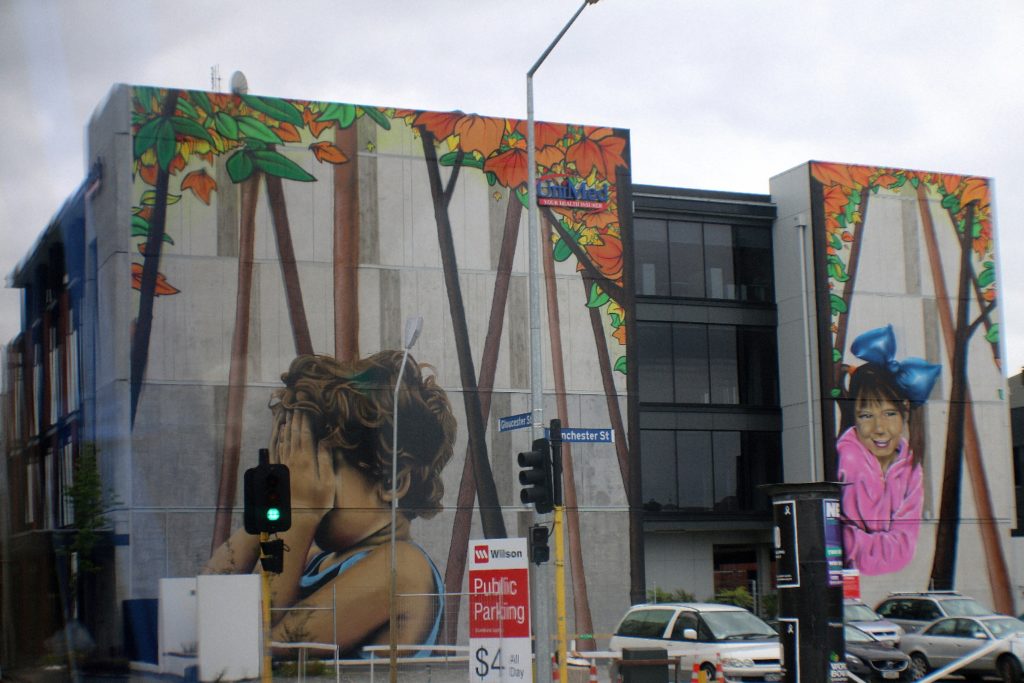
The TOGO tag remains on the old Rydges Hotel. This mural is on the side of the old Rydge’s Hotel car park. It’s by Jacob Yikes, and apparently it’s the largest one he’s ever done.
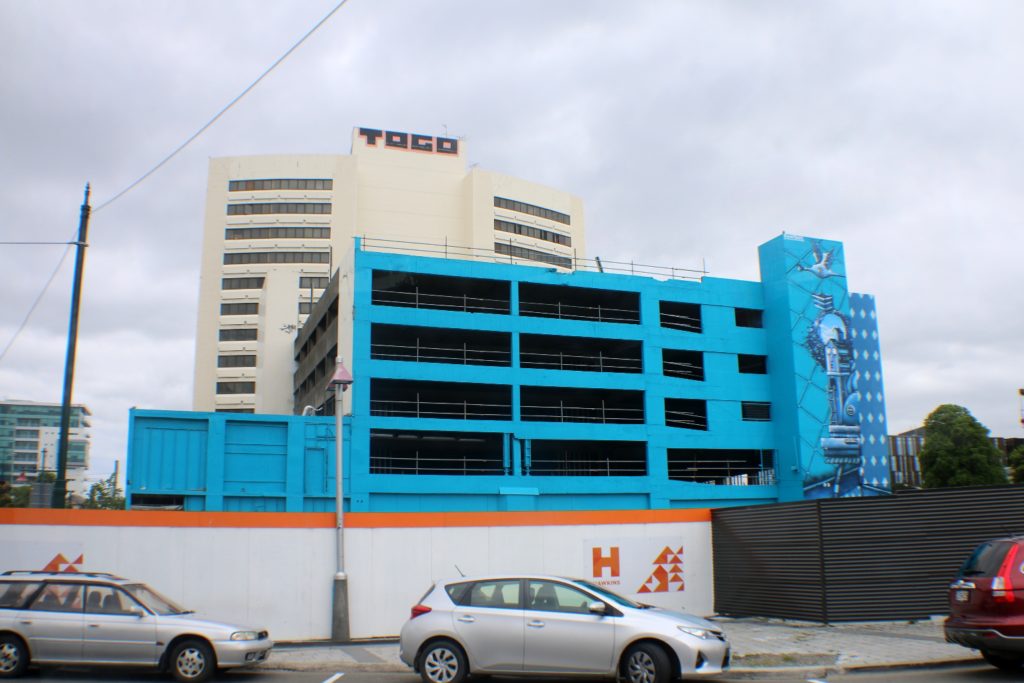
Quasi is the latest public artwork to enliven the Christchurch skyline. The five-meter tall sculpture by local artist Ronnie van Hout was craned into place atop Christchurch Art Gallery.
Since the magnitude-6.1 quake struck on Feb. 22, 2011, thousands of homes have been repaired and most of the city’s infrastructure has been fixed. Many suburbs are thriving. This new building is on the corner of Durham and Gloucester Street. It’s got a very distinctive wavy design and it looks really interesting. We were told that there were 5 other large construction sites in the immediate area.
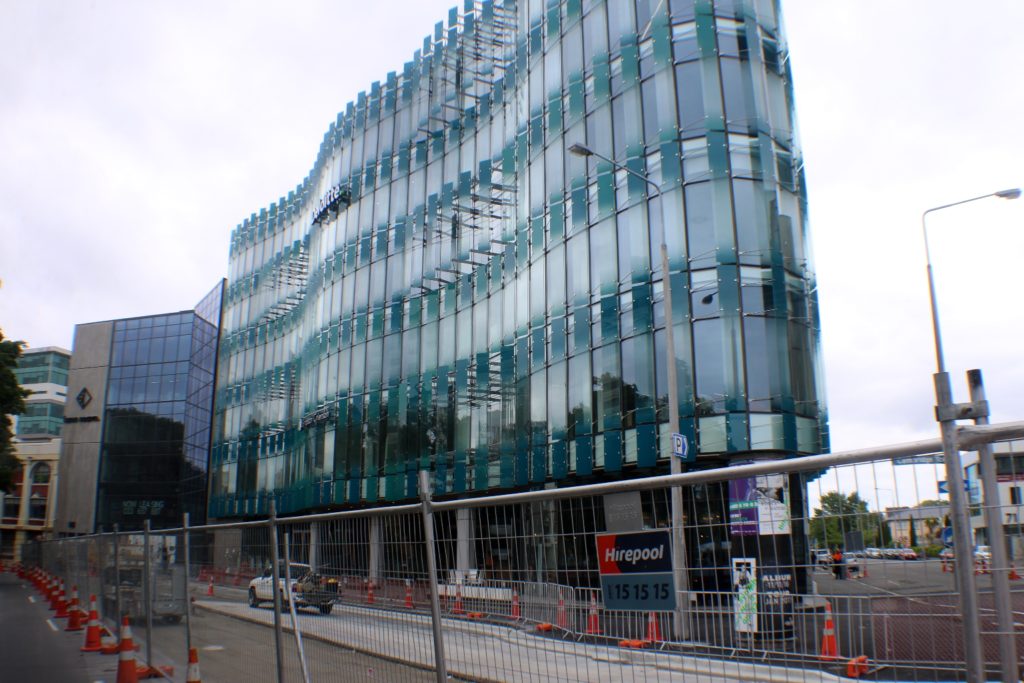
The former Forsyth Barr Building in Christchurch, New Zealand, is located on the south-east corner of the Armagh and Colombo Streets intersection. In the 2011 Christchurch earthquake, its staircases collapsed, trapping the occupants. Currently under repair, the building is to become the city’s Crowne Plaza hotel.
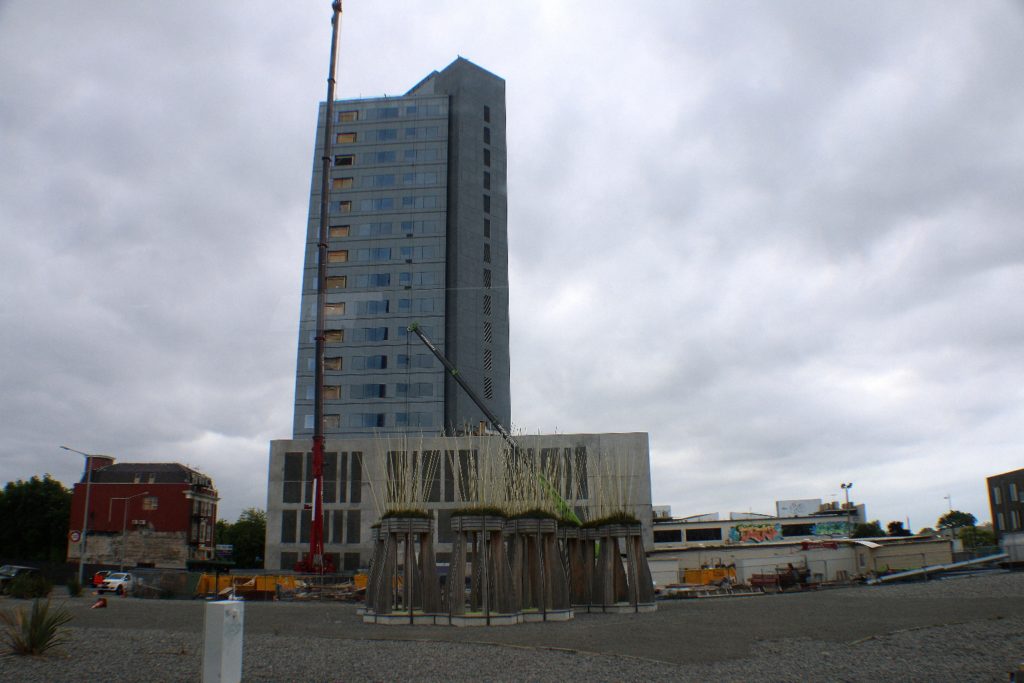
Historical New Regent Street is a pedestrian mall in Christchurch. Built as a private development in the early 1930s with 40 shops in Spanish Mission architectural style, it is one of the city’s major tourist attractions. Providing a number of small shops as a comprehensive development was an advanced idea at the time, and New Regent Street is regarded as a forerunner to modern shopping malls.
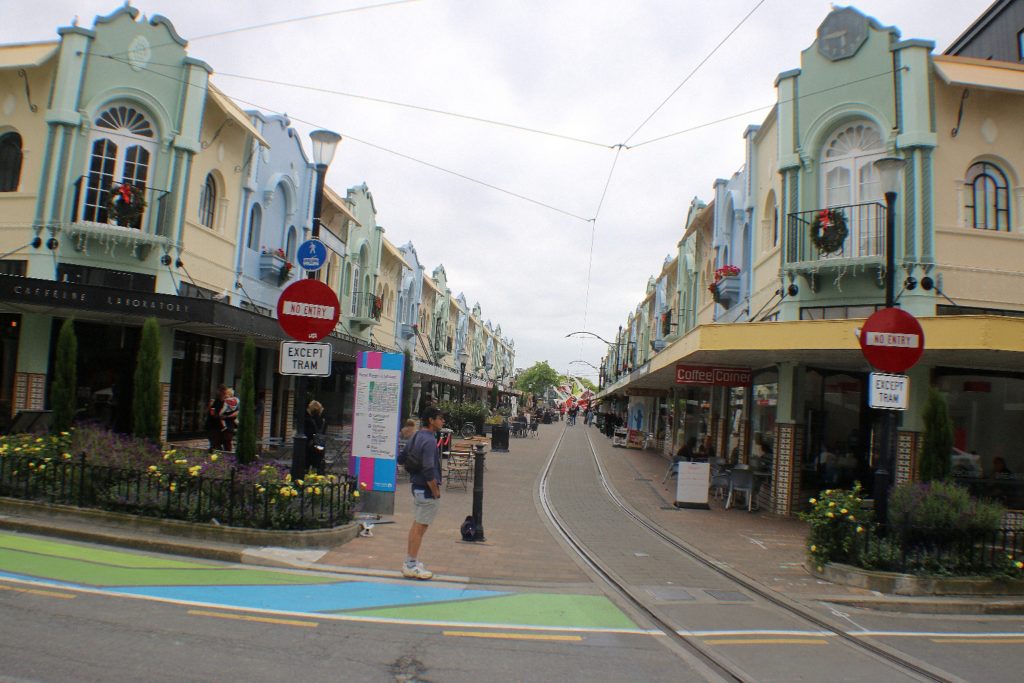
It was sad seeing all the damage done by the earthquake, but it was really nice seeing numerous new and restored buildings around the city. Here are some of the new modern apartment buildings we got to see during our city tour.
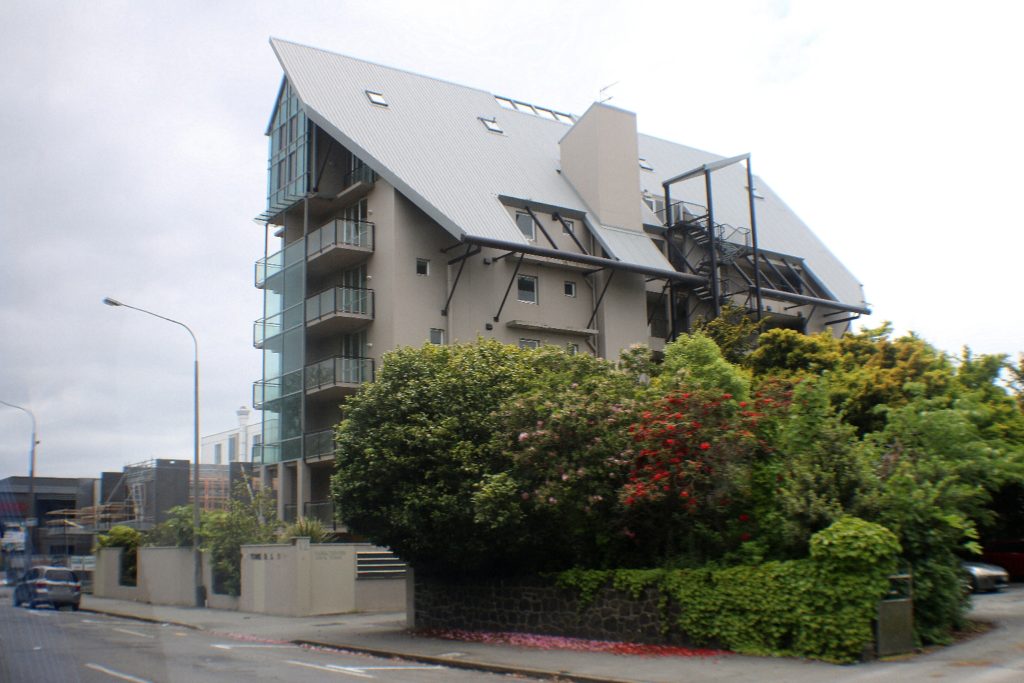
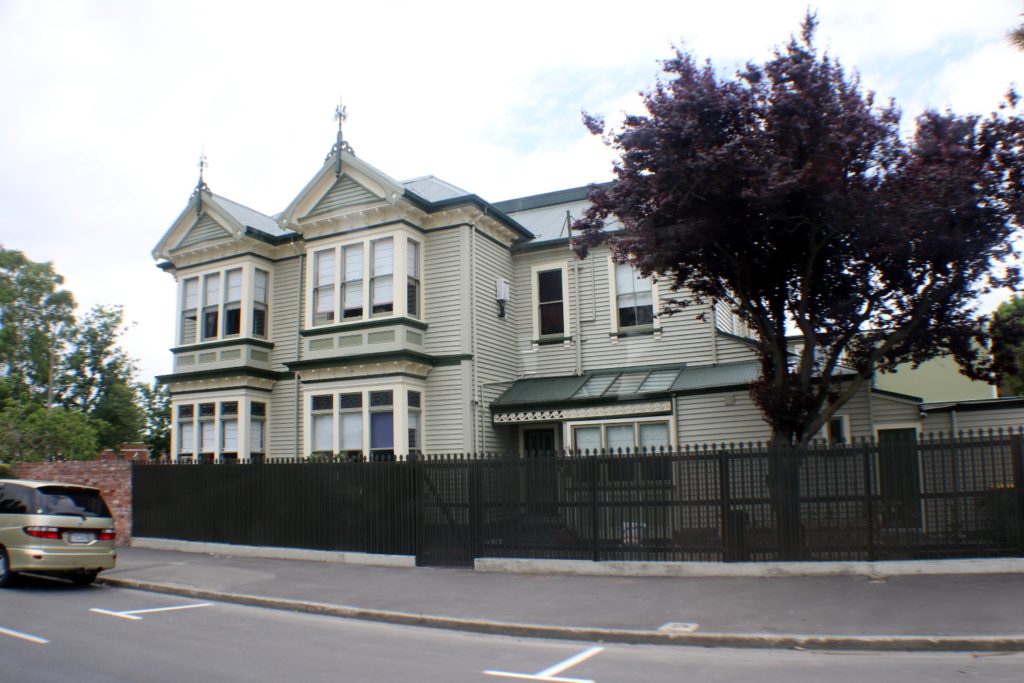
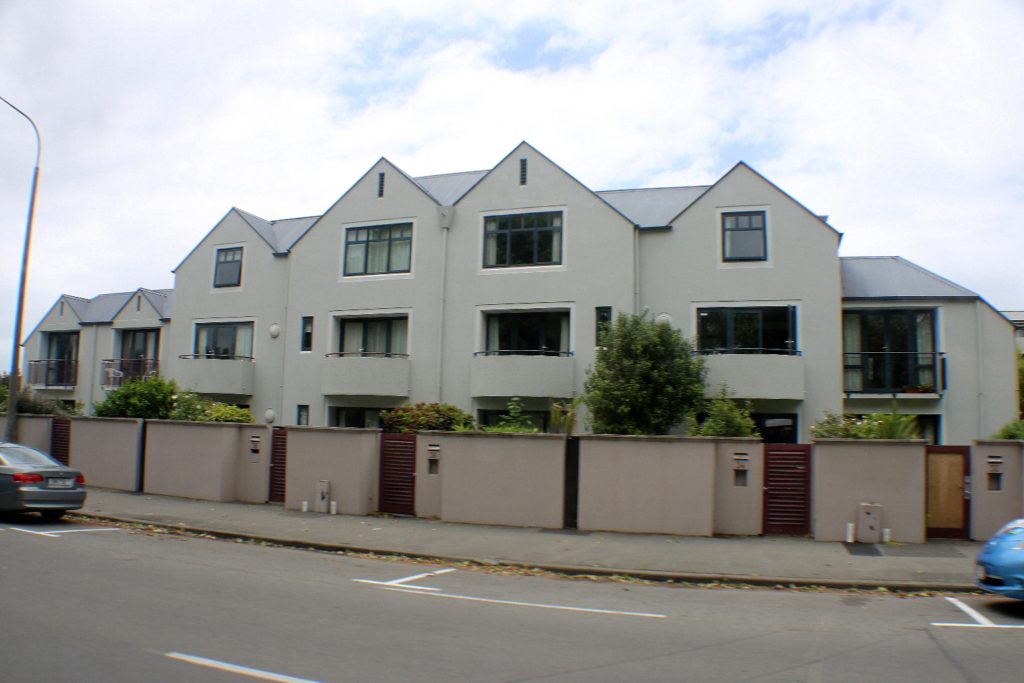
We also saw many nice houses in the residential area we drove through.
Our next stop was Willowbank Wildlife Preserve. The main reason for visiting this preserve for us was the wildlife kiwi experience. We had a chance to see kiwis a couple more times since then, but none of them were as good as here, in the preserve. Here, the entrance welcomes the visitors to the wildlife preserve.
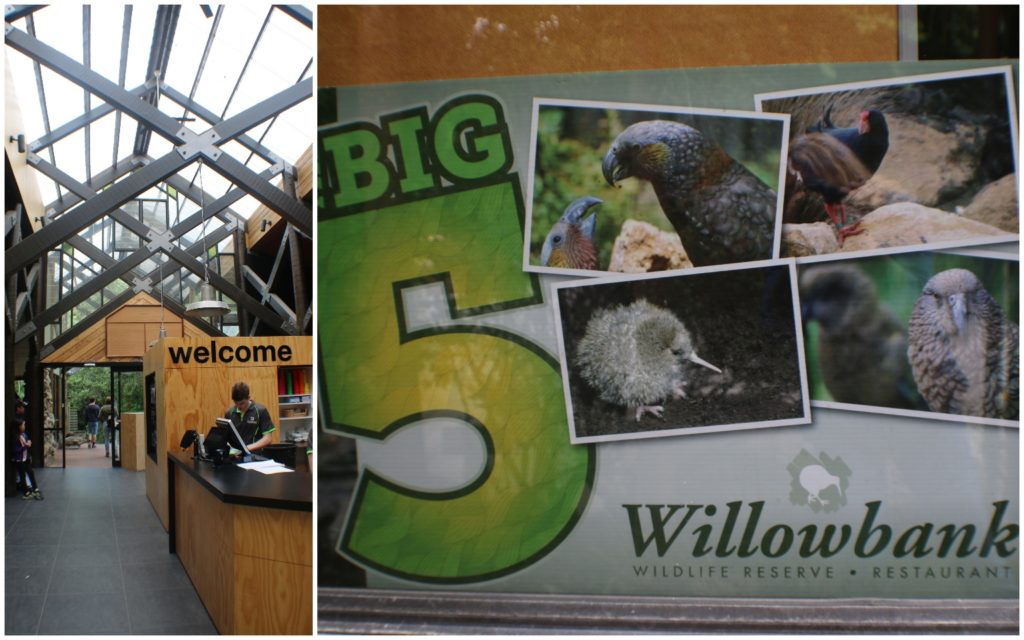
While waiting for our guided tour, we took some pictures of each other at the entrance.
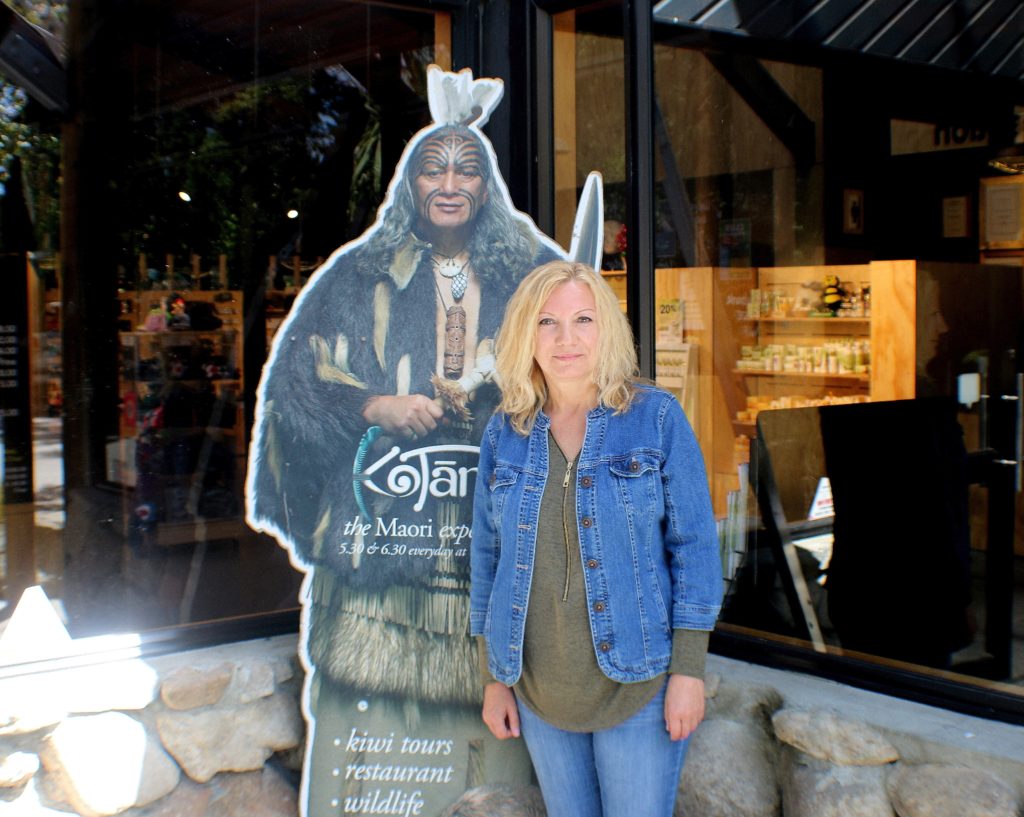
The Kiwi bird is a treasure of NZ and has been a national icon since the 1800’s. They are the smallest living ratites and lay one of the largest eggs in relation to their body size. The male sits on the eggs. Chicks hatch fully feathered after 70-80 days incubation. Kiwis eat invertebrates, mostly earthworms.
There were stuffed kiwis and information stands at the entrance to a very dark kiwi enclosure.
Flash photography is not allowed inside the kiwi enclosure, but there was not enough light to photograph without a flash. That’s why I am using the picture from the Willowbank website. Live kiwis, I saw there, look exactly like the one in the picture below.
Kiwi are the only bird in the world to have their nostrils at the end of their bill. What this means is that a Kiwi’s bill is actually only around three millimeters long!
We spent some time watching the curious, cheeky and captivating Kea birds. These Willowbank’s alpine parrots were really entertaining. They took honey off a spoon held by guide and walked all over her head and shoulders and didn’t try to nip with their huge beaks.
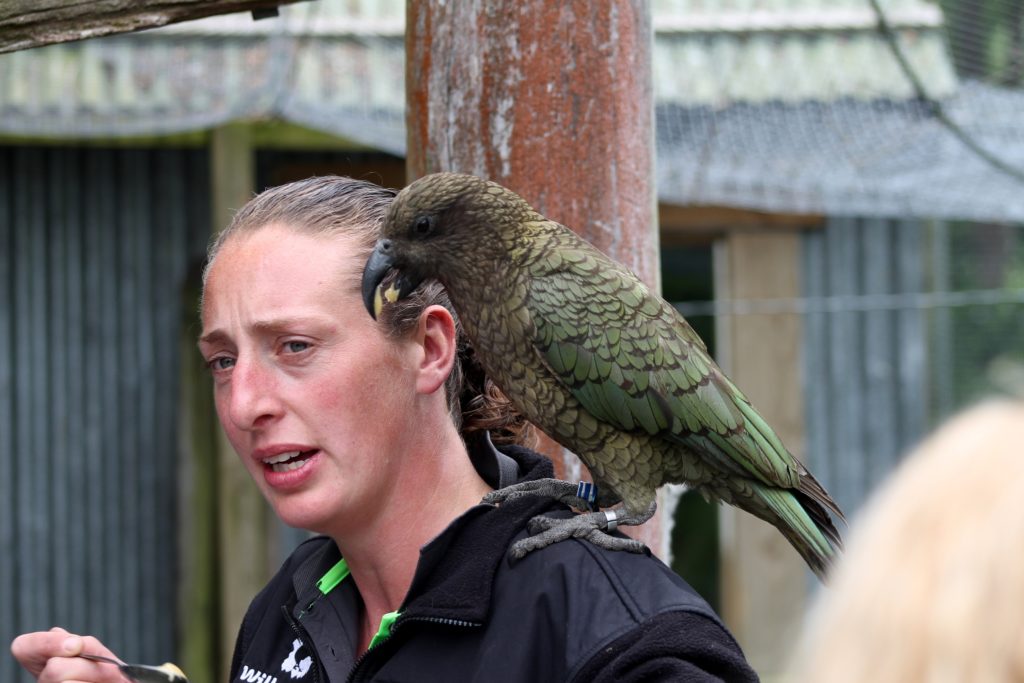
Known for their curiosity and intelligence, these mountain parrots are classified as Nationally Endangered with just 3,000 – 7,000 birds remaining.
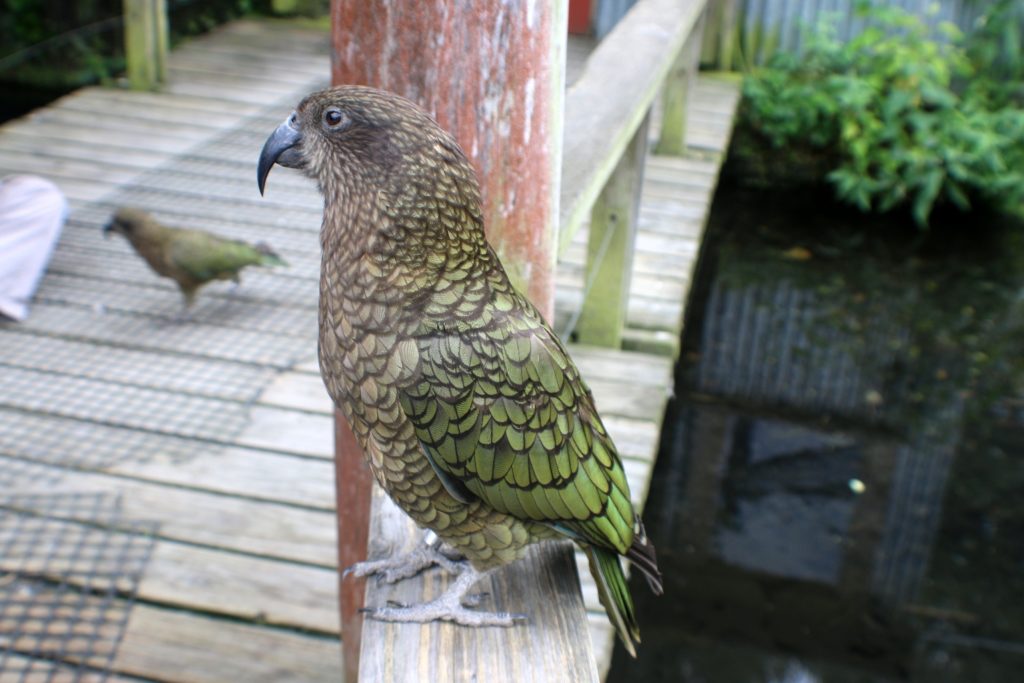
The buff weka is one native bird that isn’t in danger of becoming extinct any time soon. Many New Zealand birds are eaten by rats, cats and other introduced predators. Weka have been recorded preying on rats, and even killing and eating stoats! The endemic Weka is a flightless bird. It seems like Weka is a very similar to kiwi bird with a shorter beak, that comes out in daylight.
Black Swans are well known for their protective nature and sometimes aggression during breeding season. However, we were completely safe with these beautiful birds at the preserve.
Beautiful Barbary Doves.
This dove knows his sign. 🙂
New Zealand’s iconic wood pigeon, the Kereru.
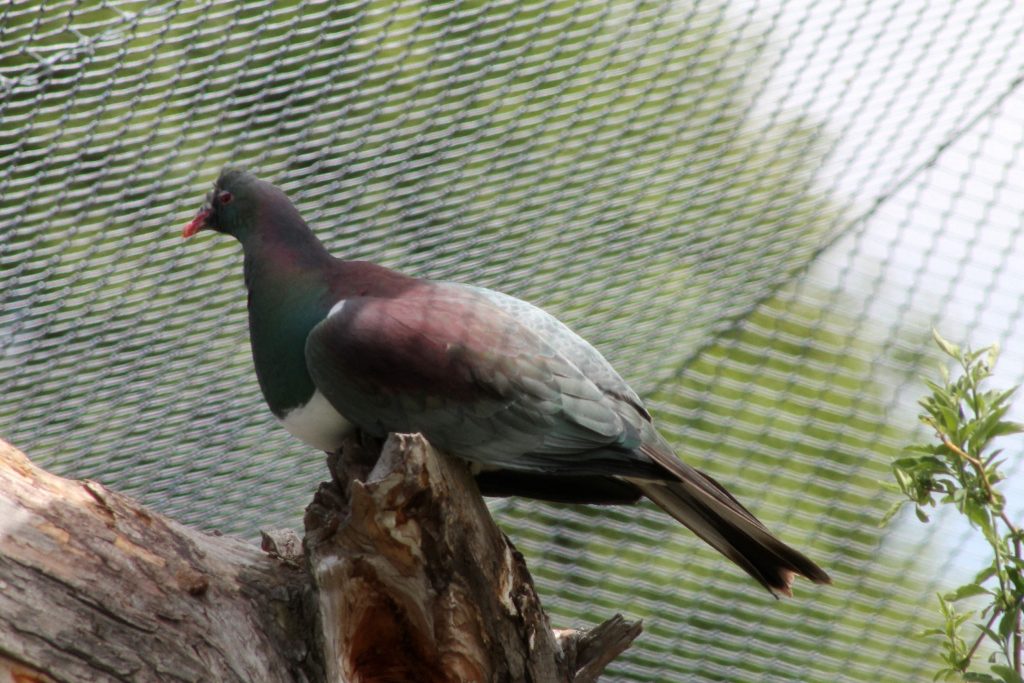
Kunekune Pig (actually translated as Fat Fat Pig).
Tuatara (Maori for ‘spiny back’) are commonly referred to as ‘living dinosaurs’ or ‘living fossils’. This is due to their species being over 220 million years old; they’re definitely worth a visit!
At the exit we saw these lovely deer.
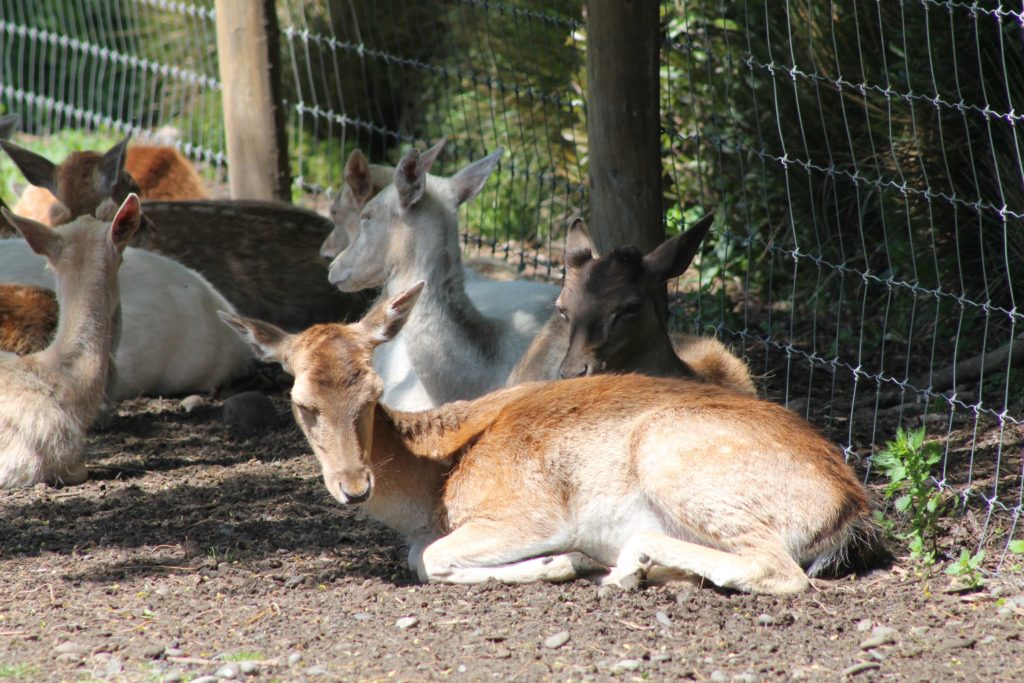
This deer was the most curious one. 🙂
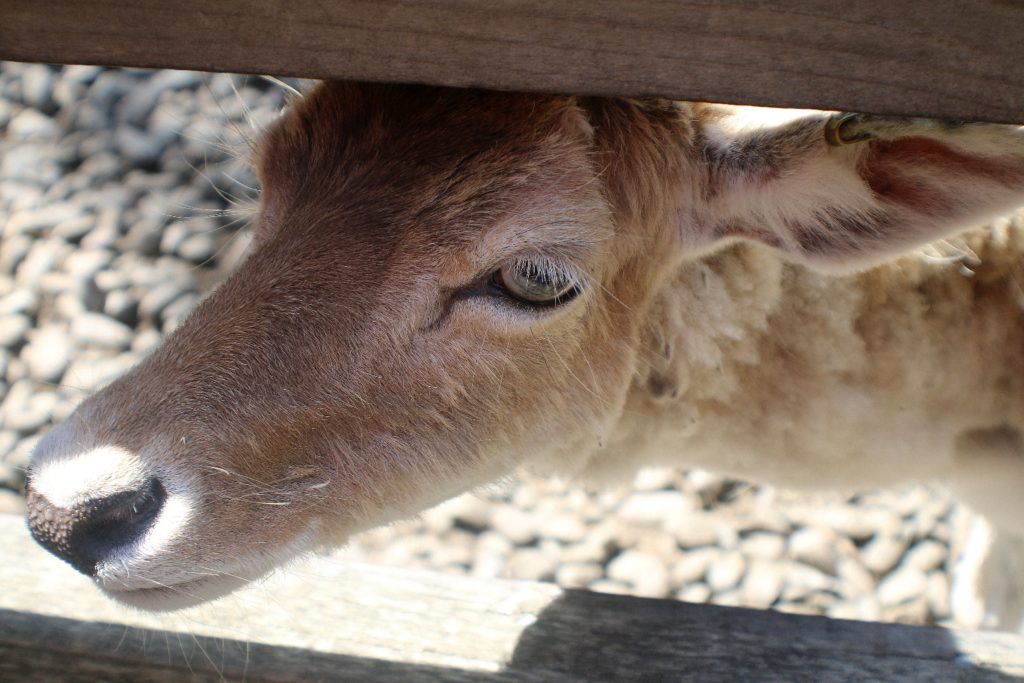
Exiting through the NZ exstinct birds exhibits.
On our way from Akaroa to Christchurch and back, we had a chance to enjoy the gorges NZ views.
Passing Silo Stay Little River Motel. Traditionally grain silos are found in the country filled with feed, surrounded by a distinct waft of farm animals; however ‘Silo Stay’ based in Little River, Banks Peninsula is going against the grain.
In this instance, proprietary grain silos are being used as individual motel units as part of an innovative, eco-friendly and affordable accommodation complex. Each two story motel unit is 8.7 meters high. The peak has a glazed lid allowing a glimpse of the night sky while relaxing in bed.
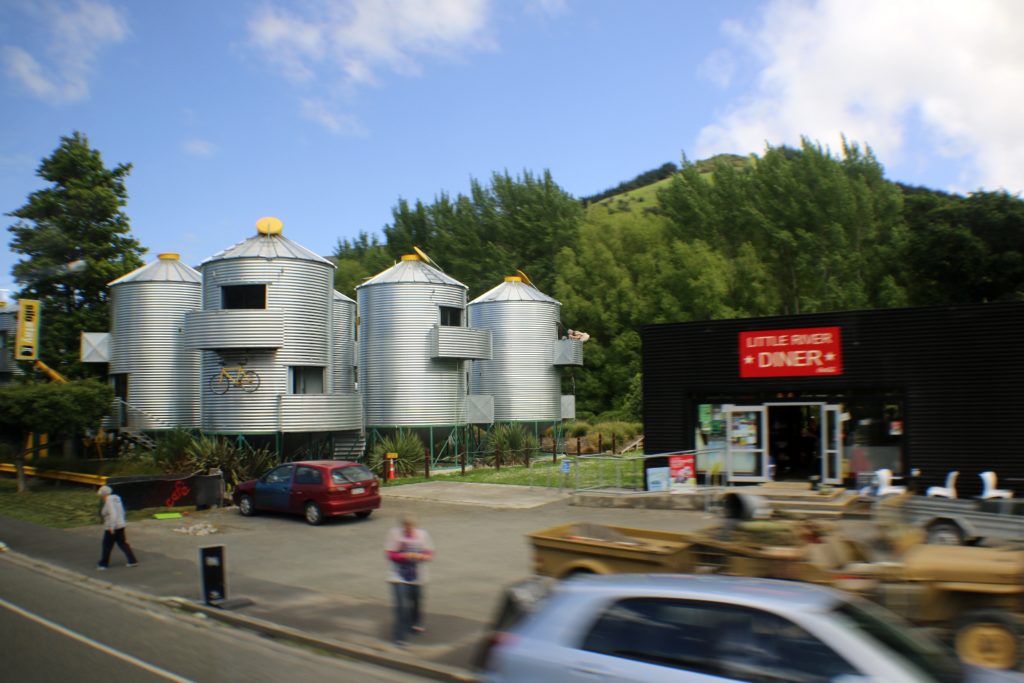
More beautiful views from the road. Pictures definitely don’t do justice, especially when they were taken through the window of the moving bus.
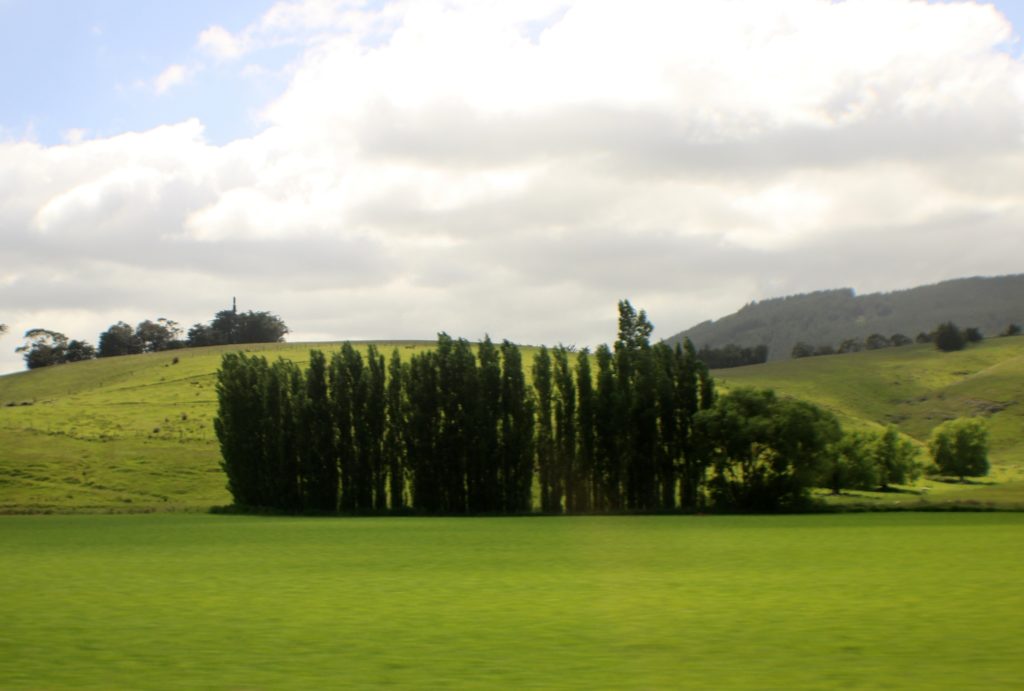
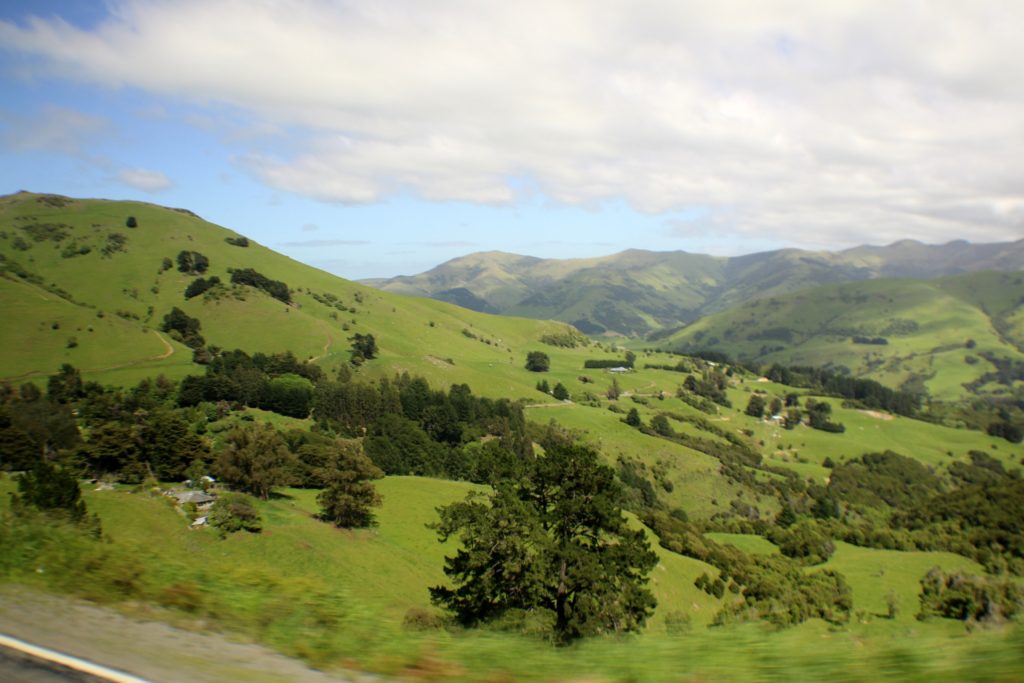
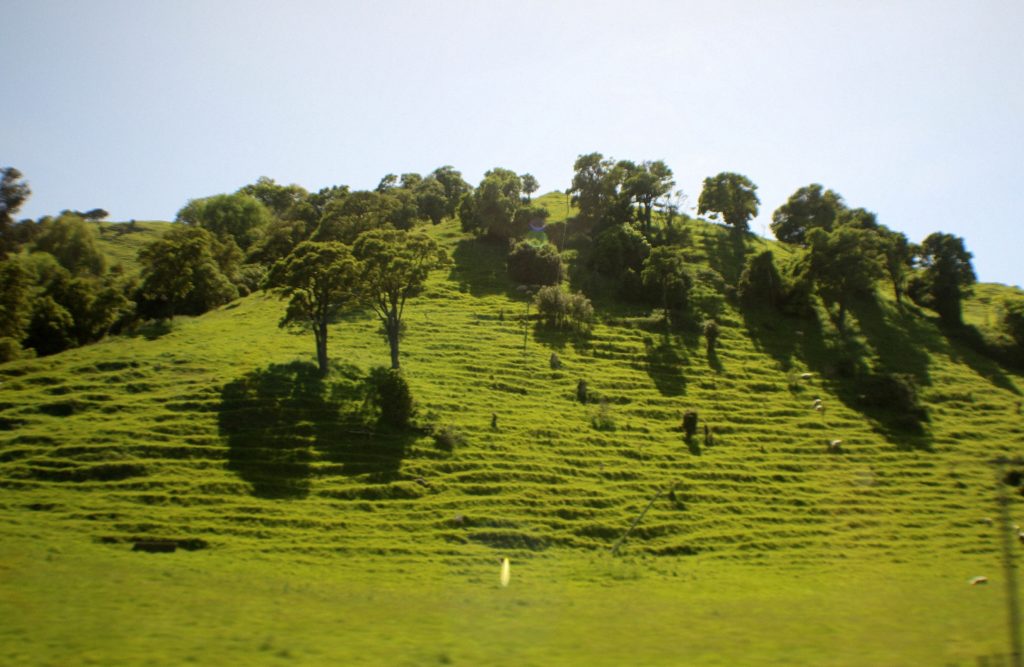
We stopped at The Little River Railway Station, which is one of New Zealand’s best preserved former railways. This is a nice use of an old railway station. The Little River station has been well preserved by the local community, who have converted it into a center that sells local craft and historical items.
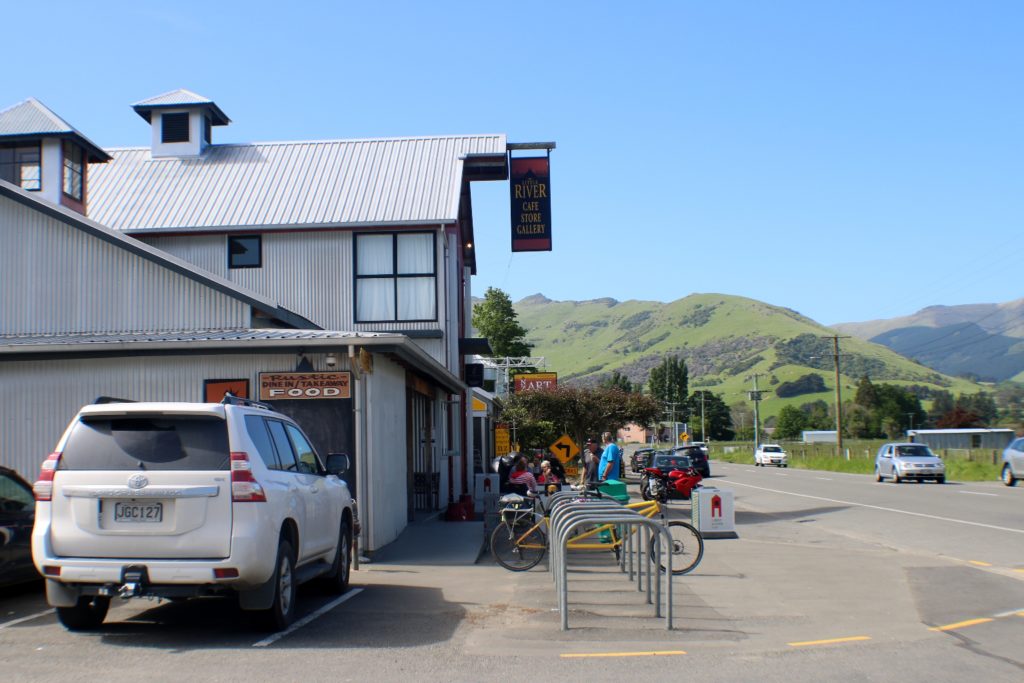
The platform and goods shed are still in good repair, and some meters of trackage have been installed so that a number of preserved freight wagons can be displayed.
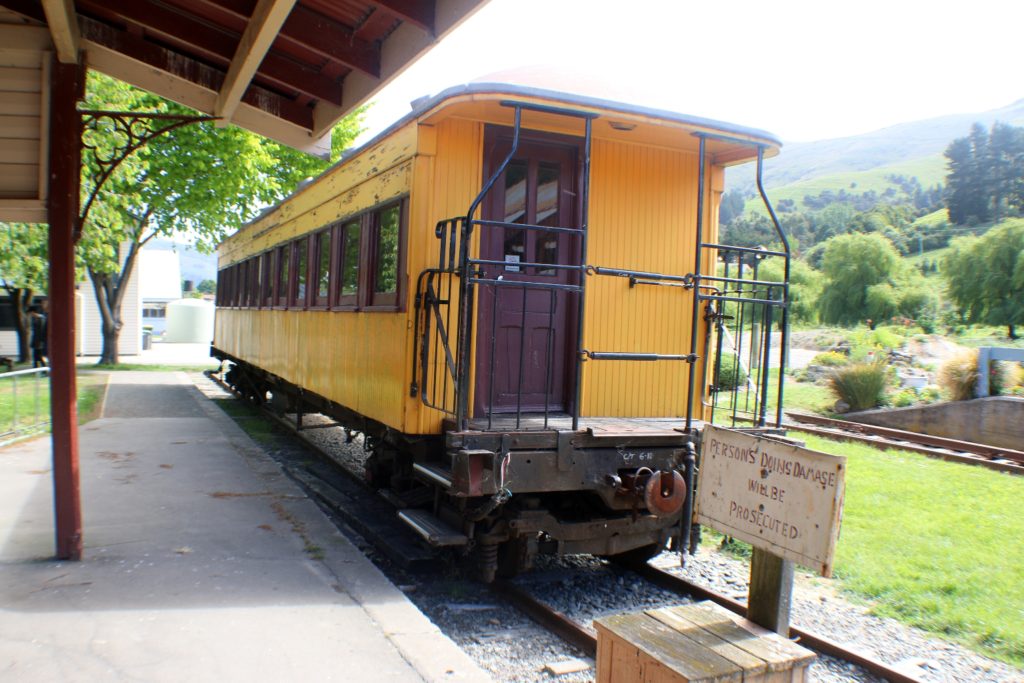
Restored railway carriage at former Railway Station, Little River, Banks Peninsula, Canterbury, New Zealand.
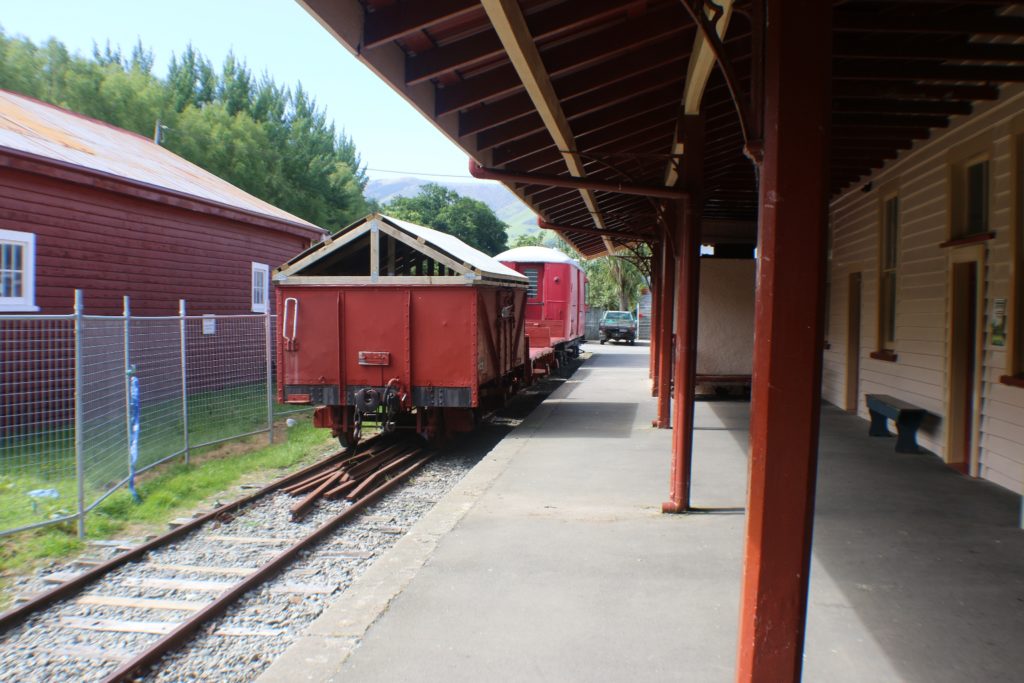
Right after we passed the Hilltop Tavern, we were treated to an incredible picturesque view. After traveling up and down the windy hill roads, we stopped here for picture taking.
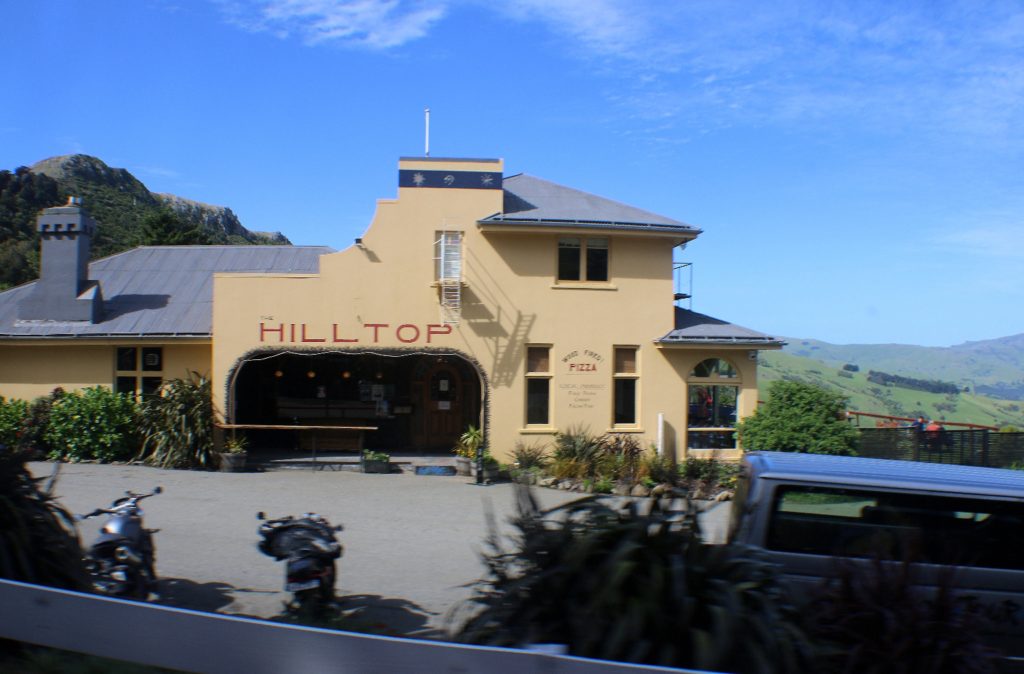
Breathtaking view of the volcanic Banks Peninsula bays!
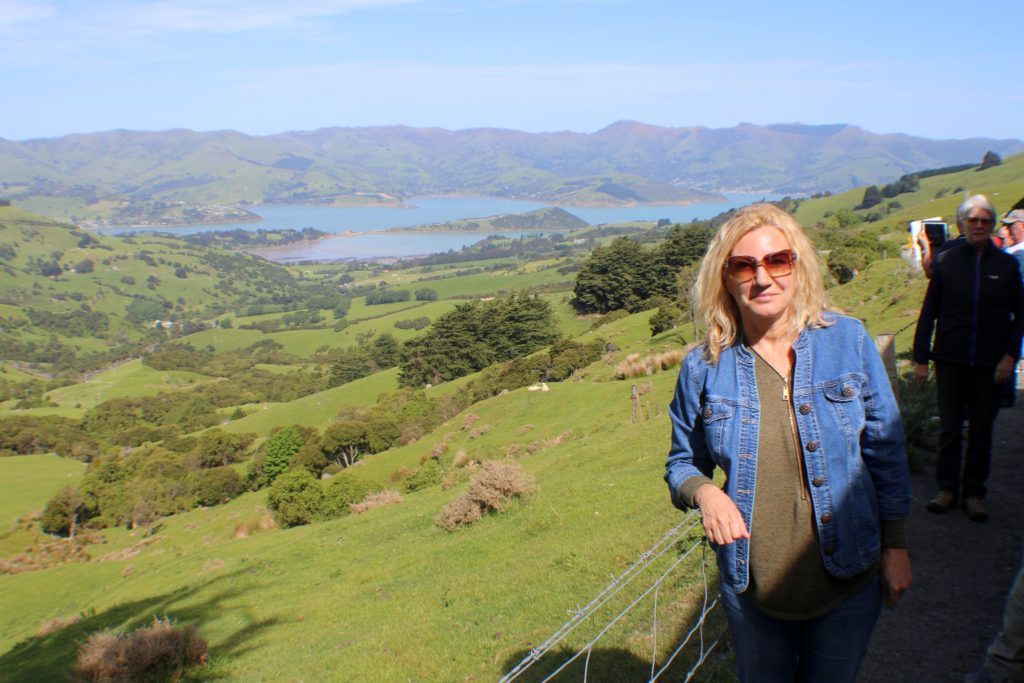
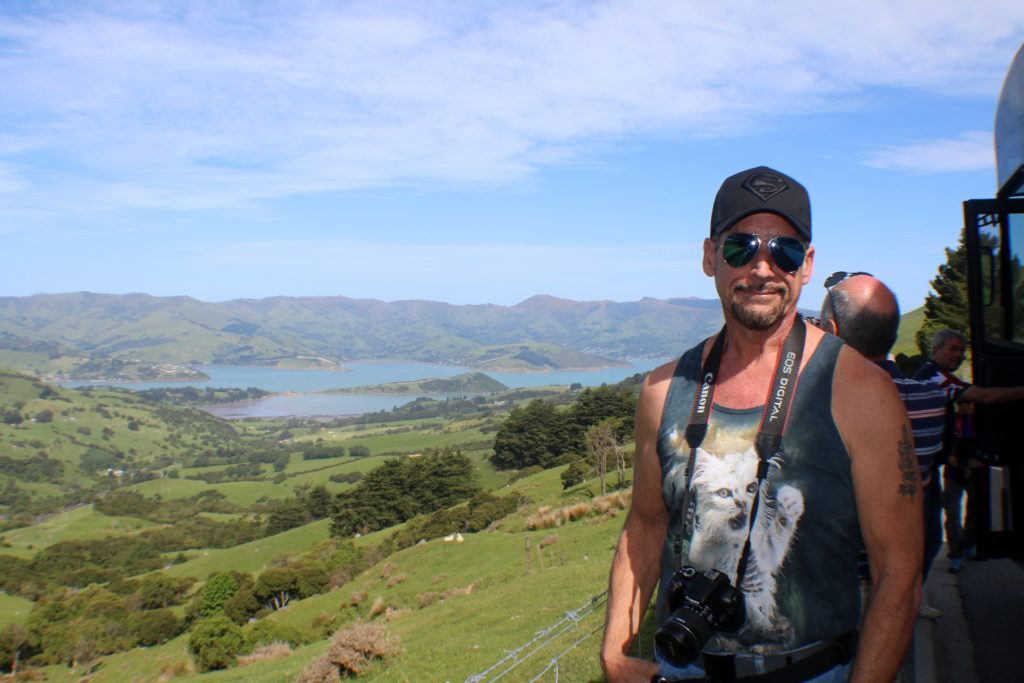
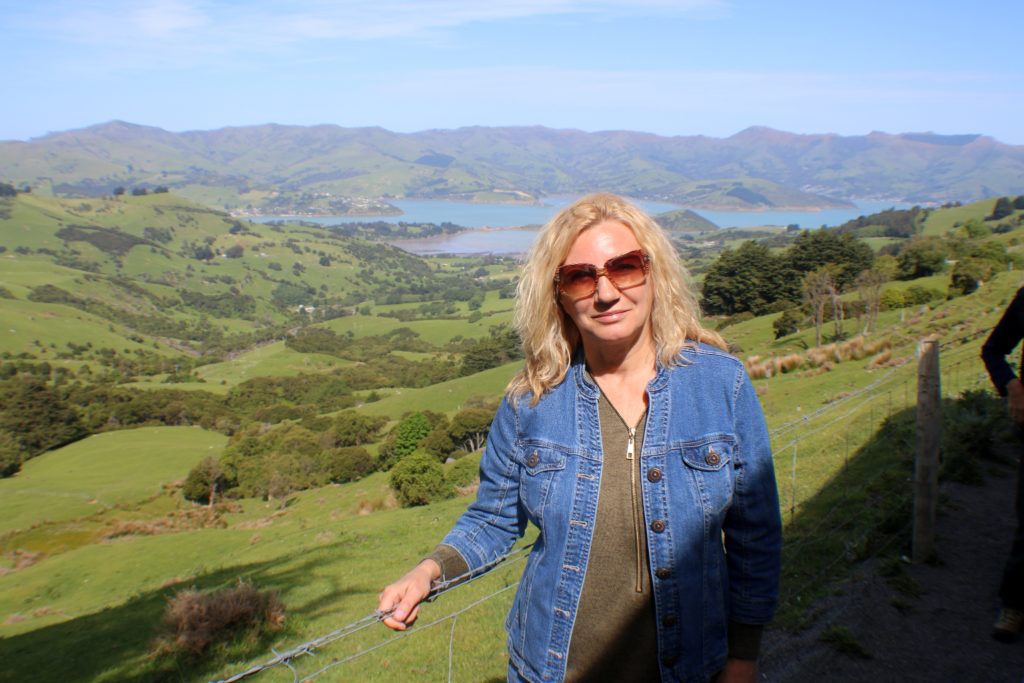
New Zealand wouldn’t be New Zealand without the incredible views of the greenest pastures and countless sheep across the country.
